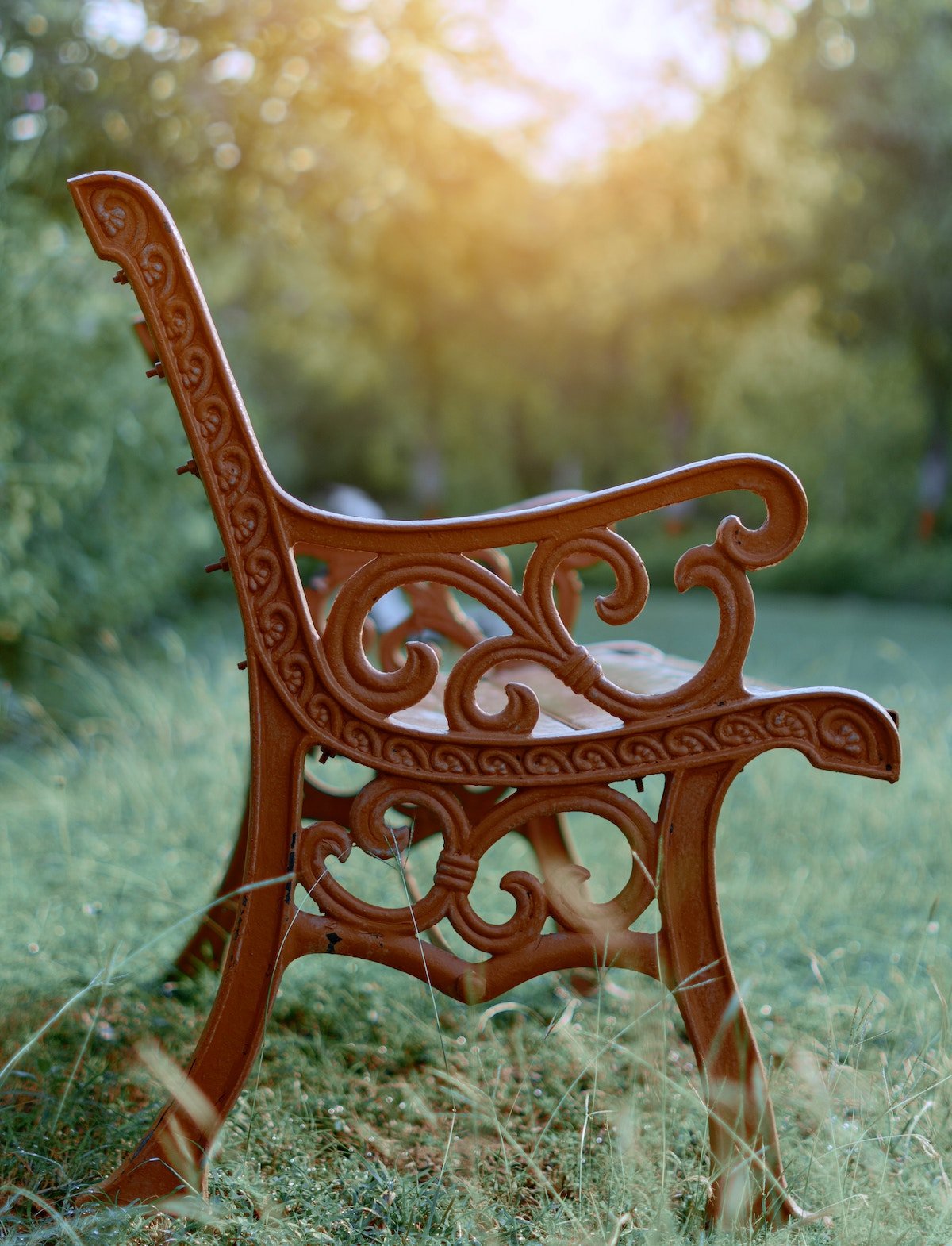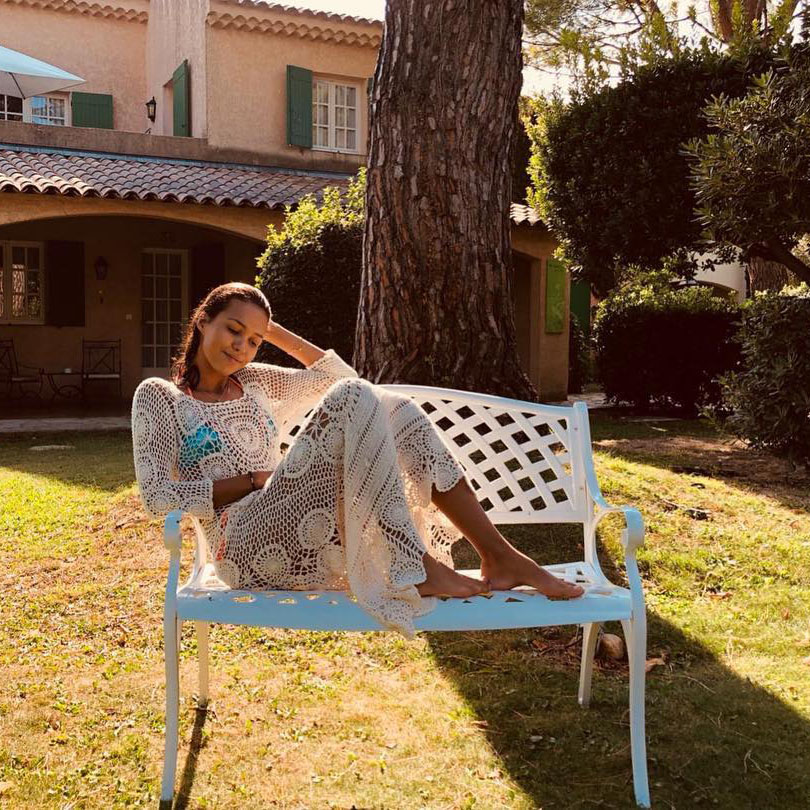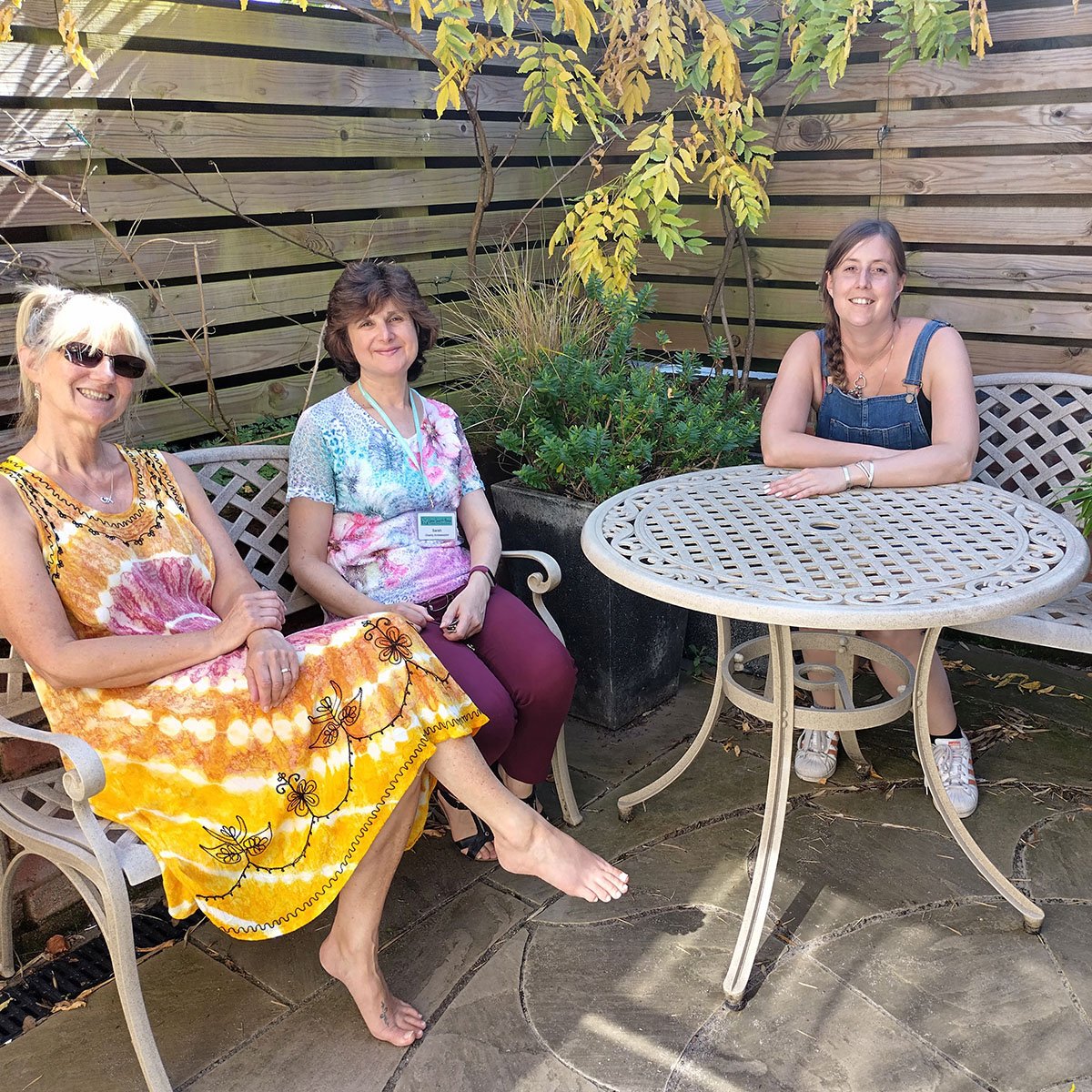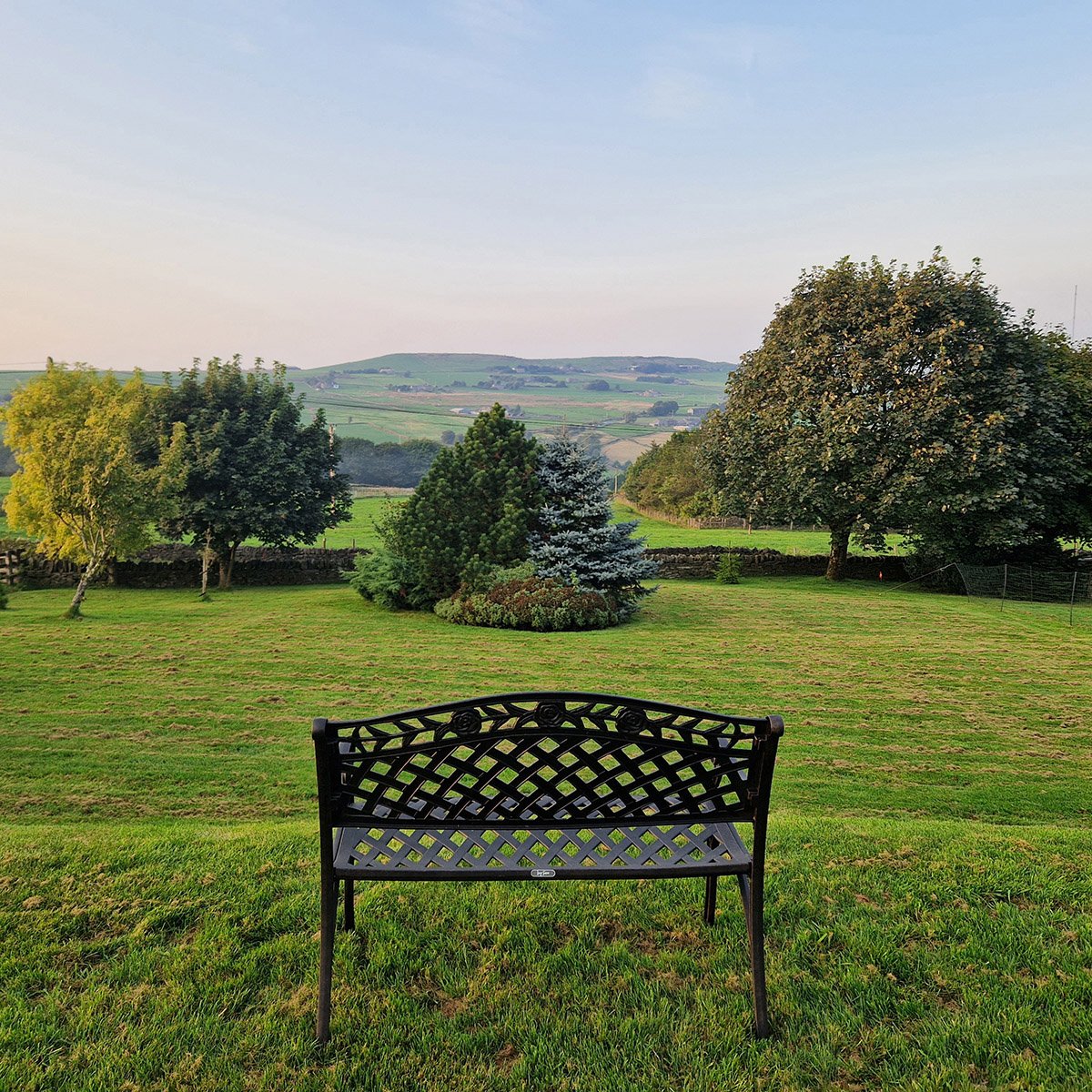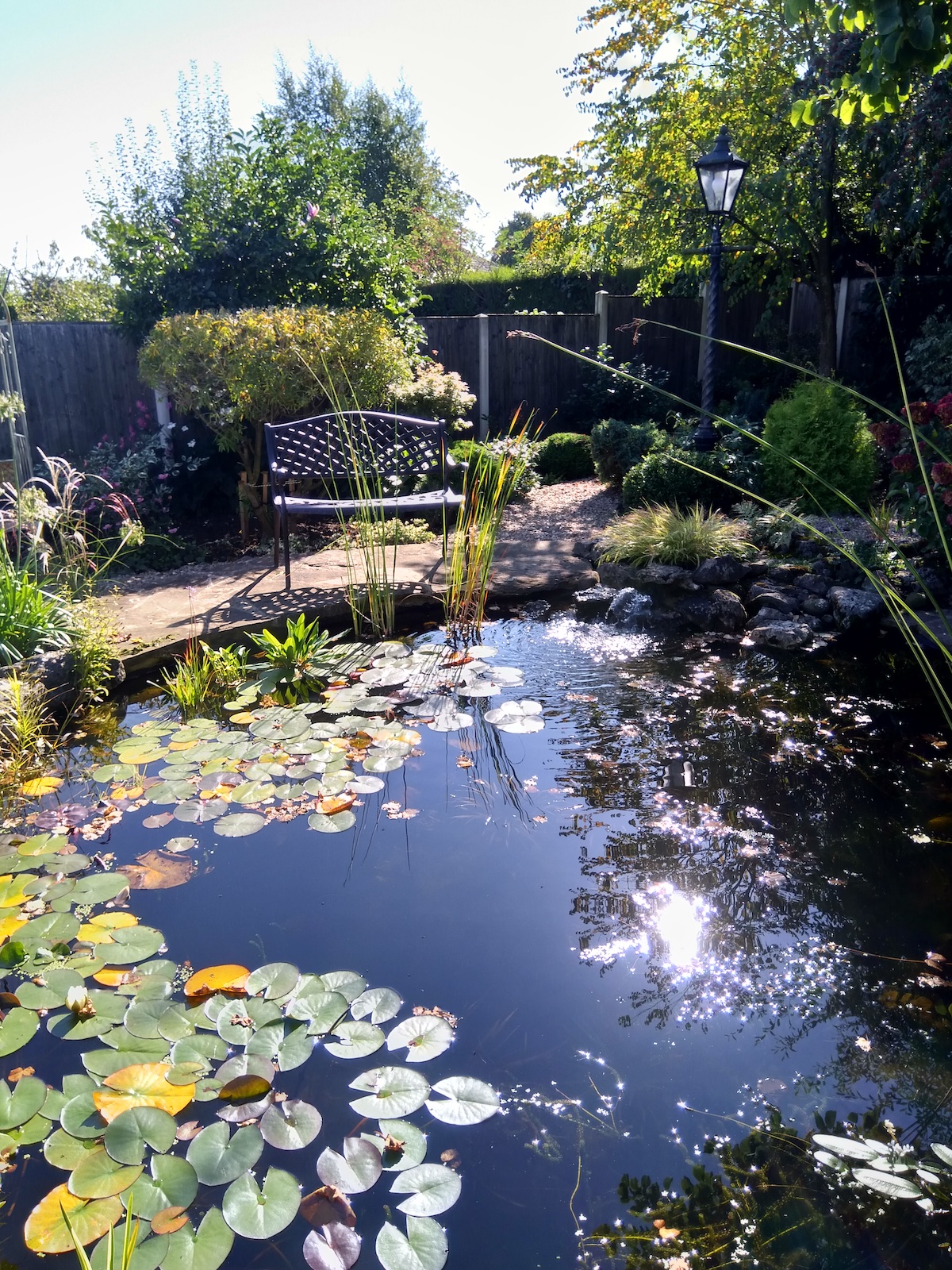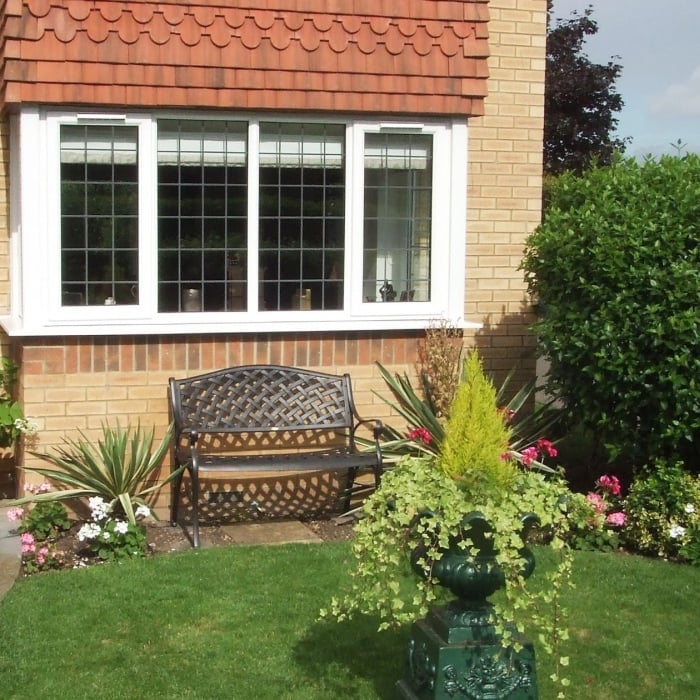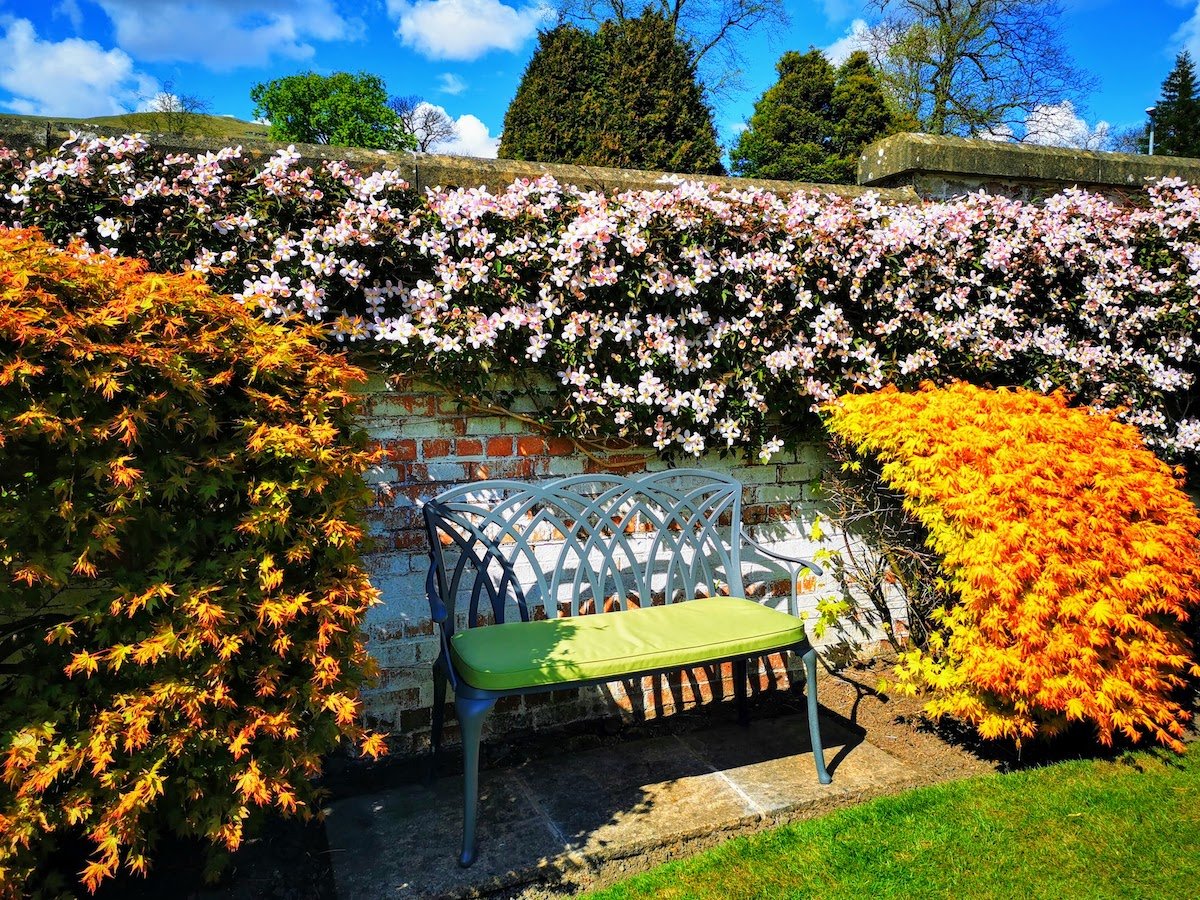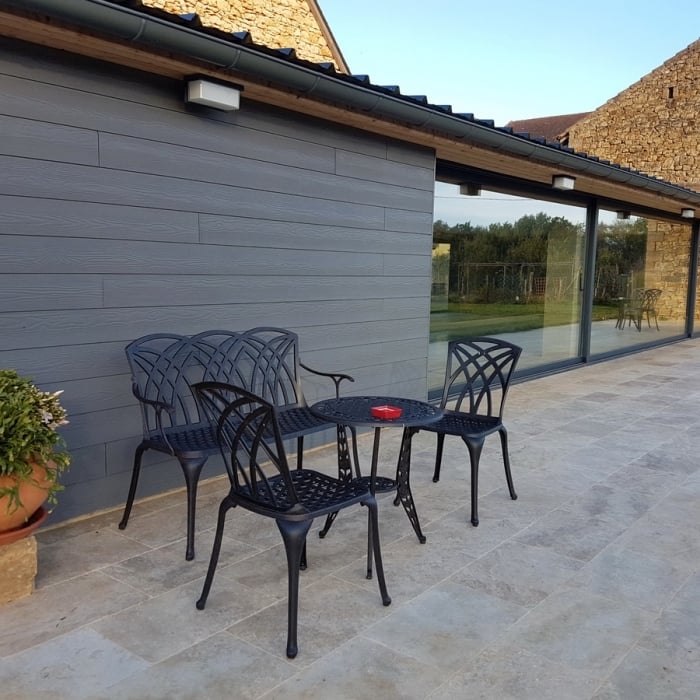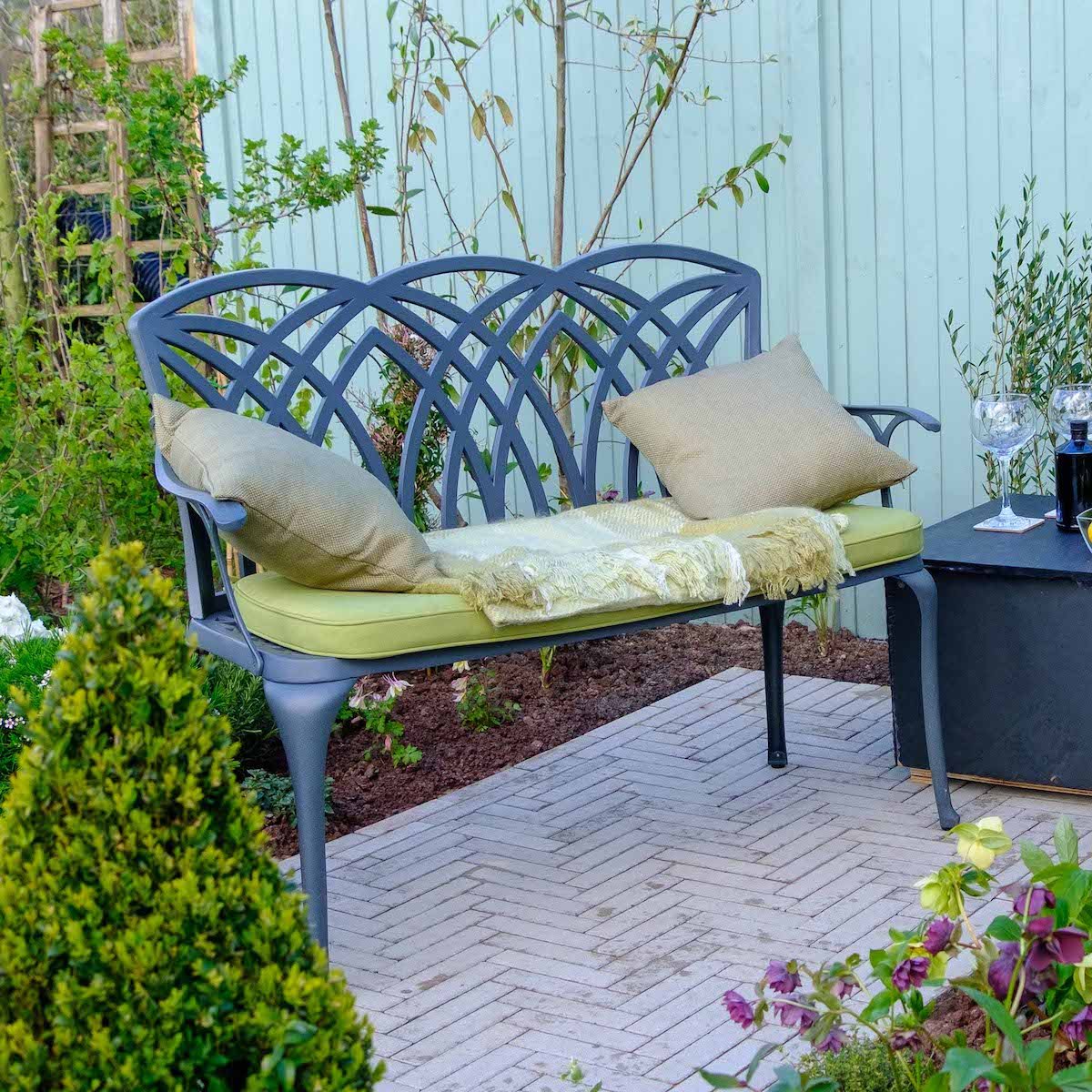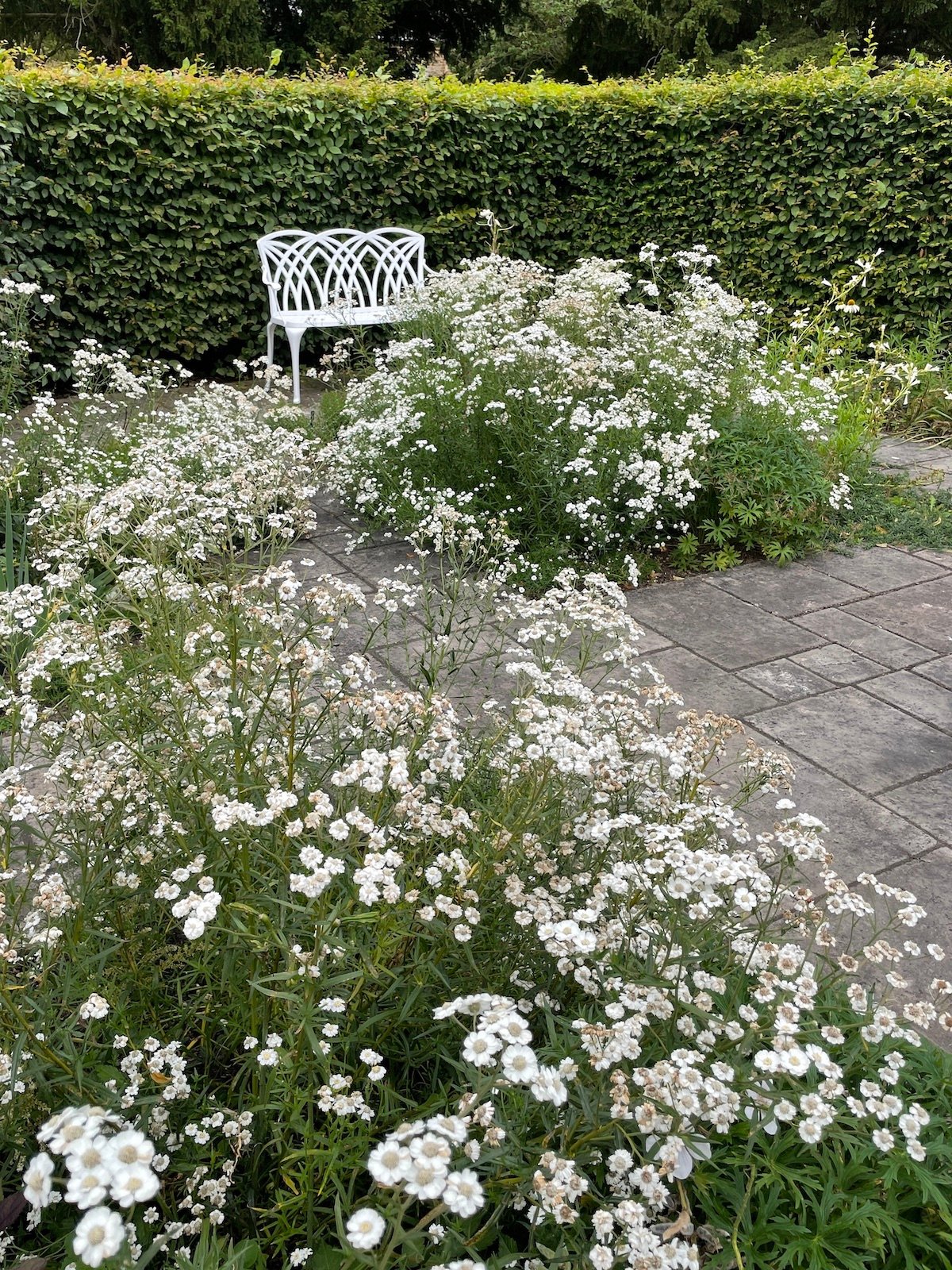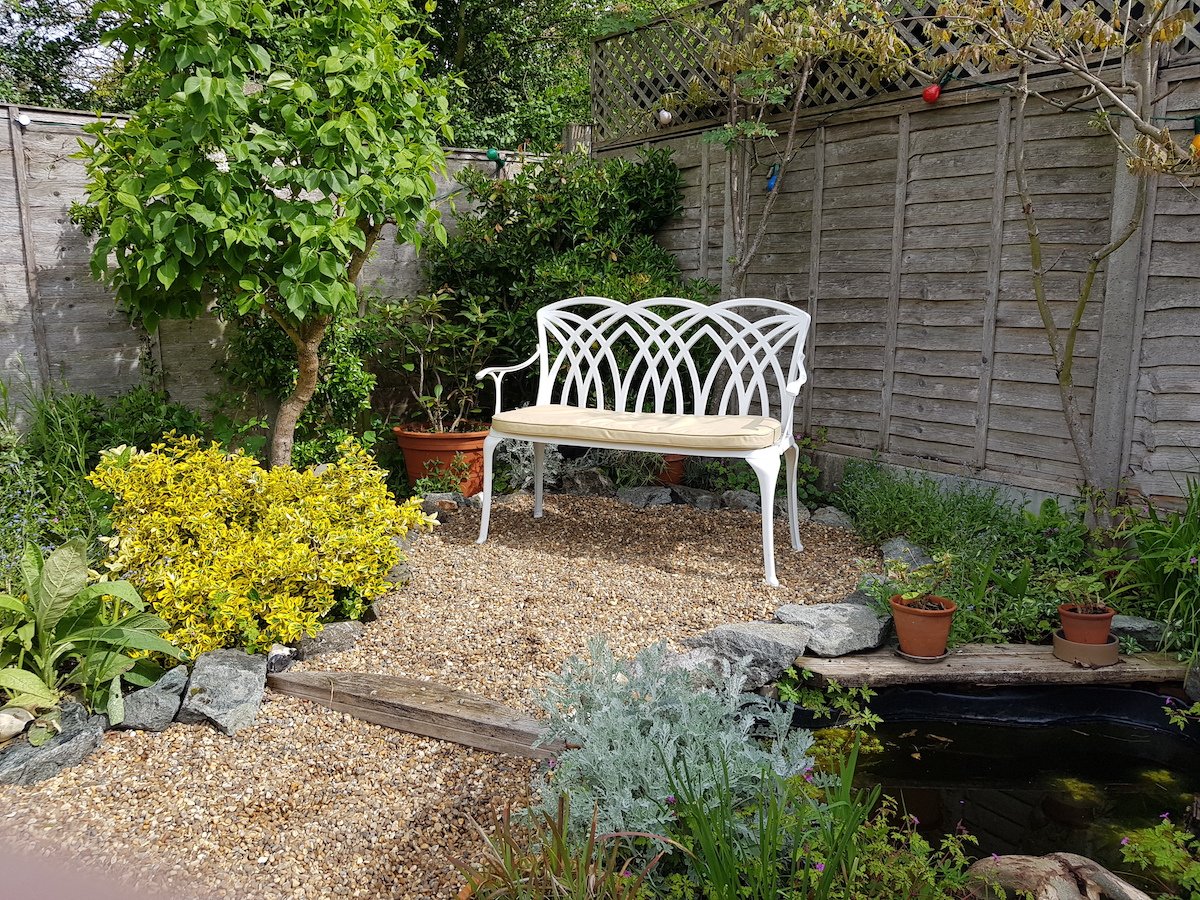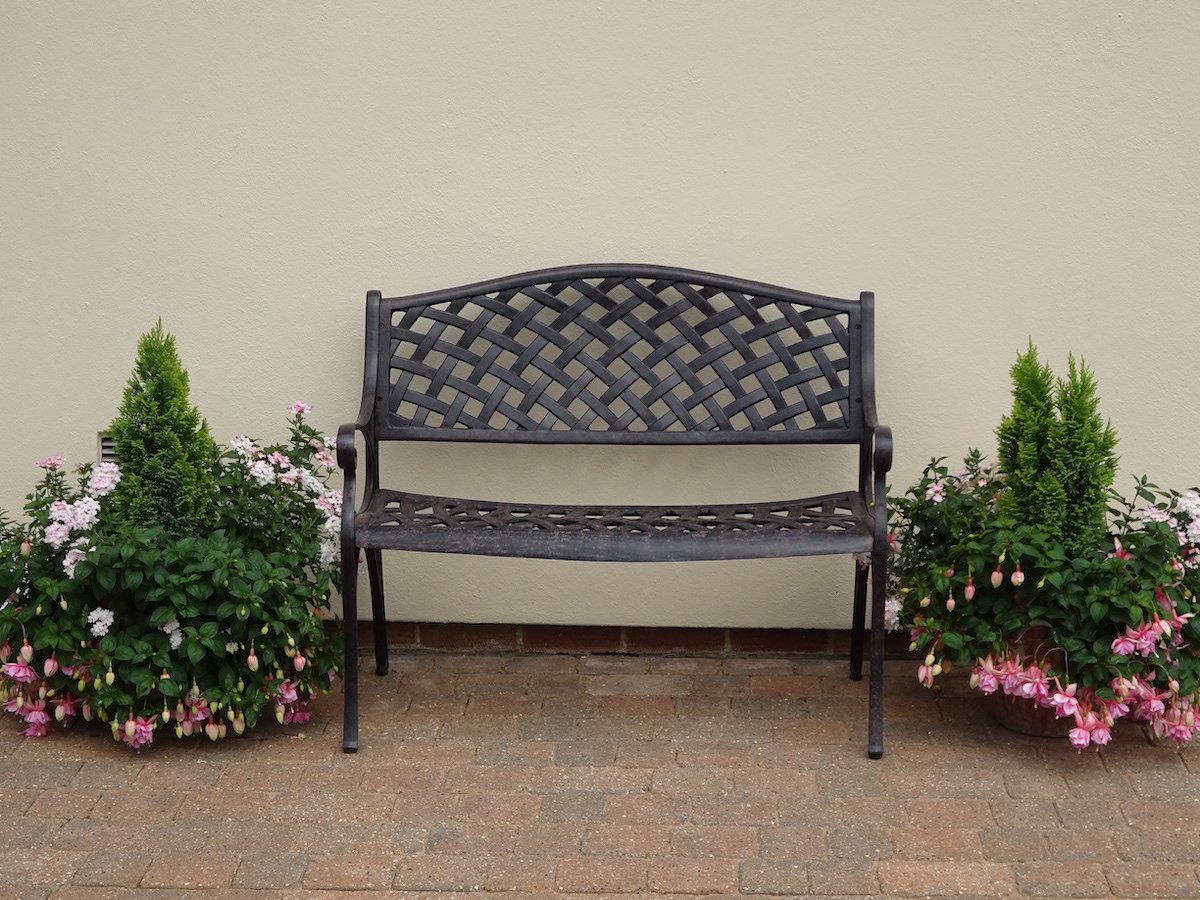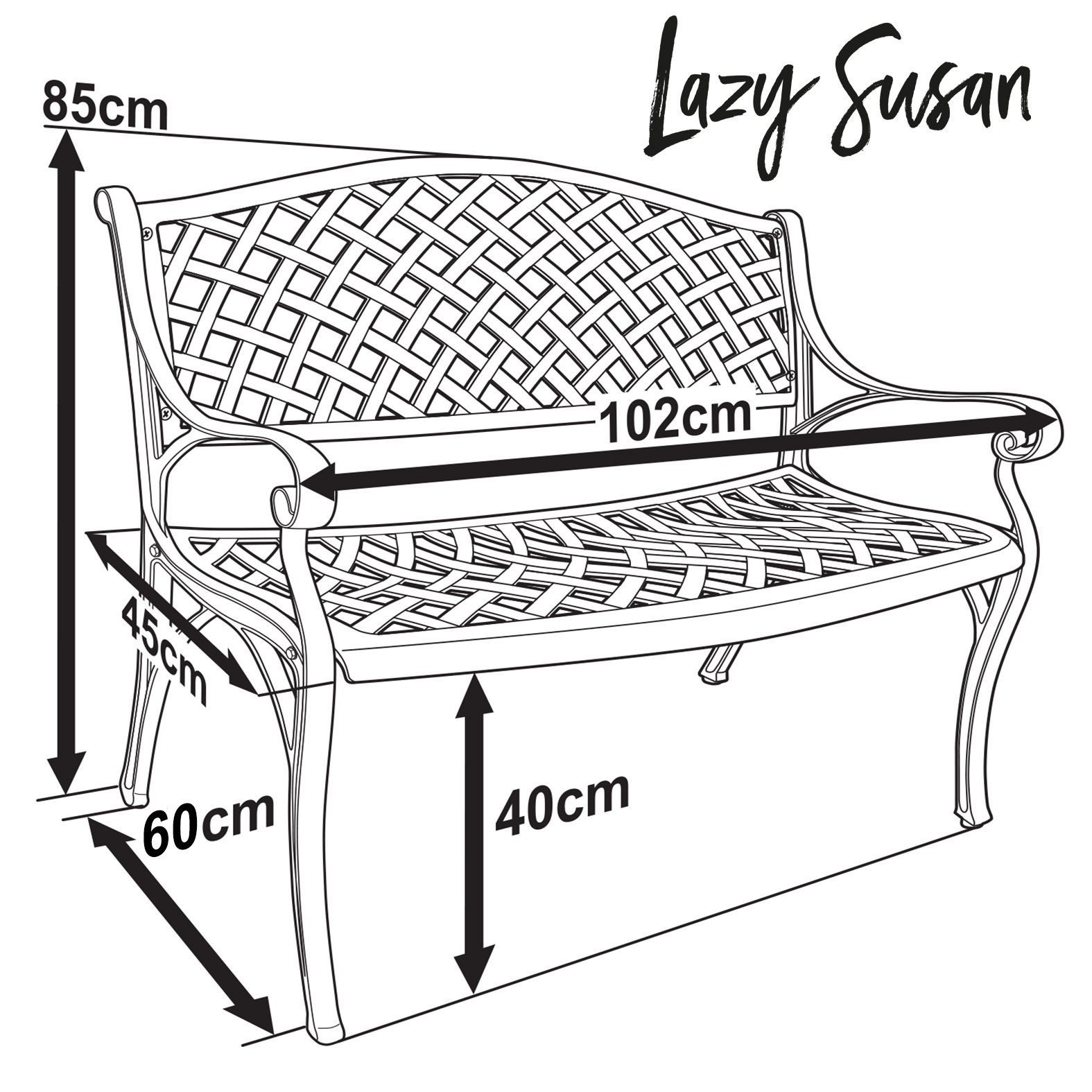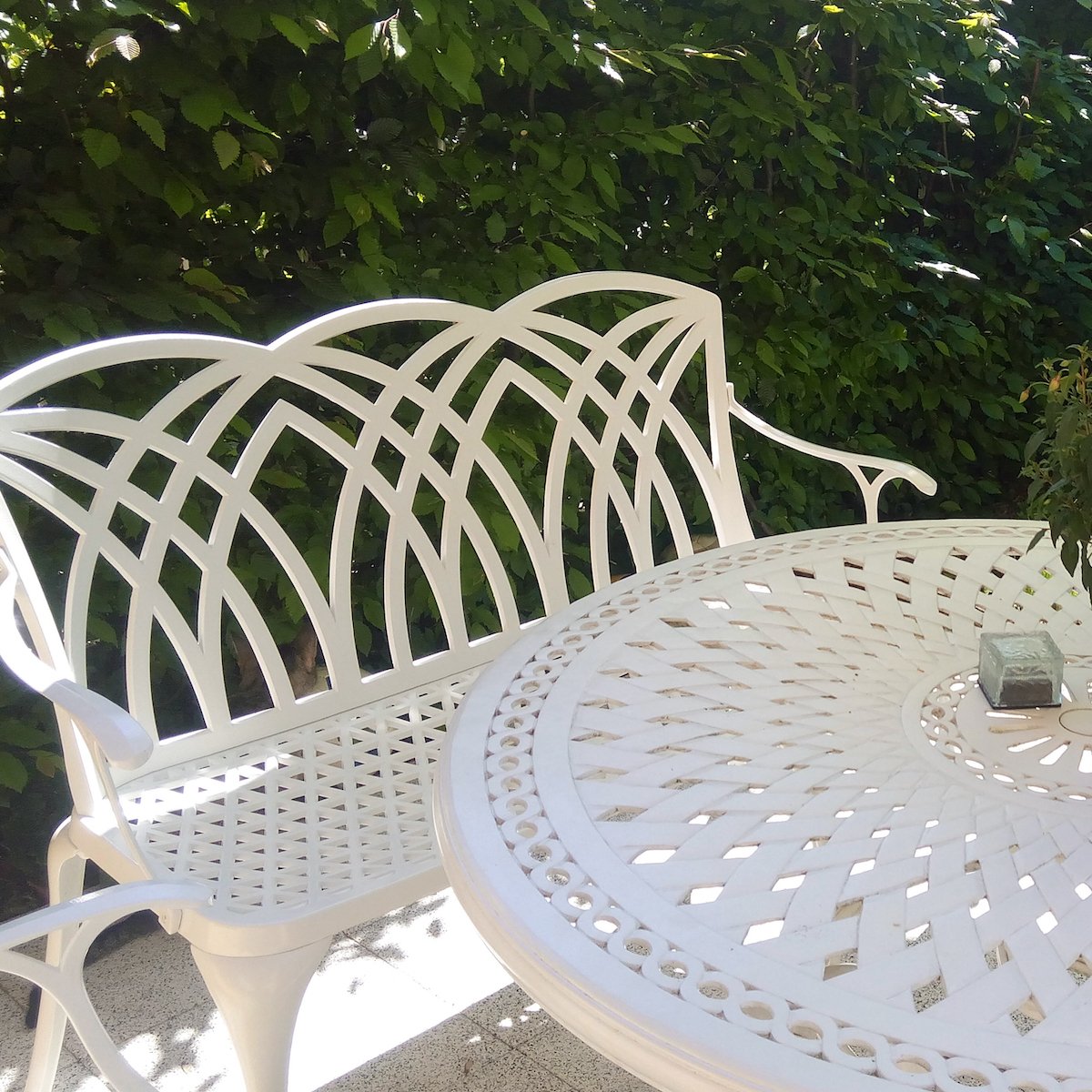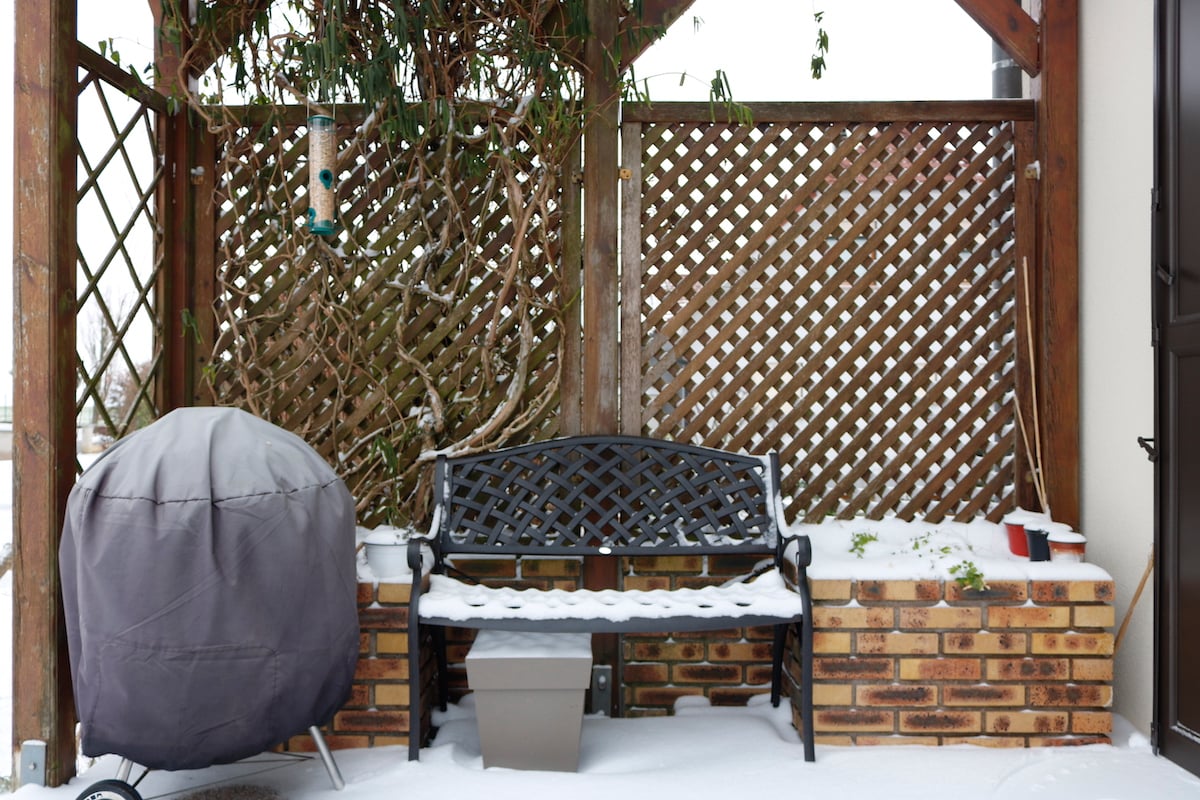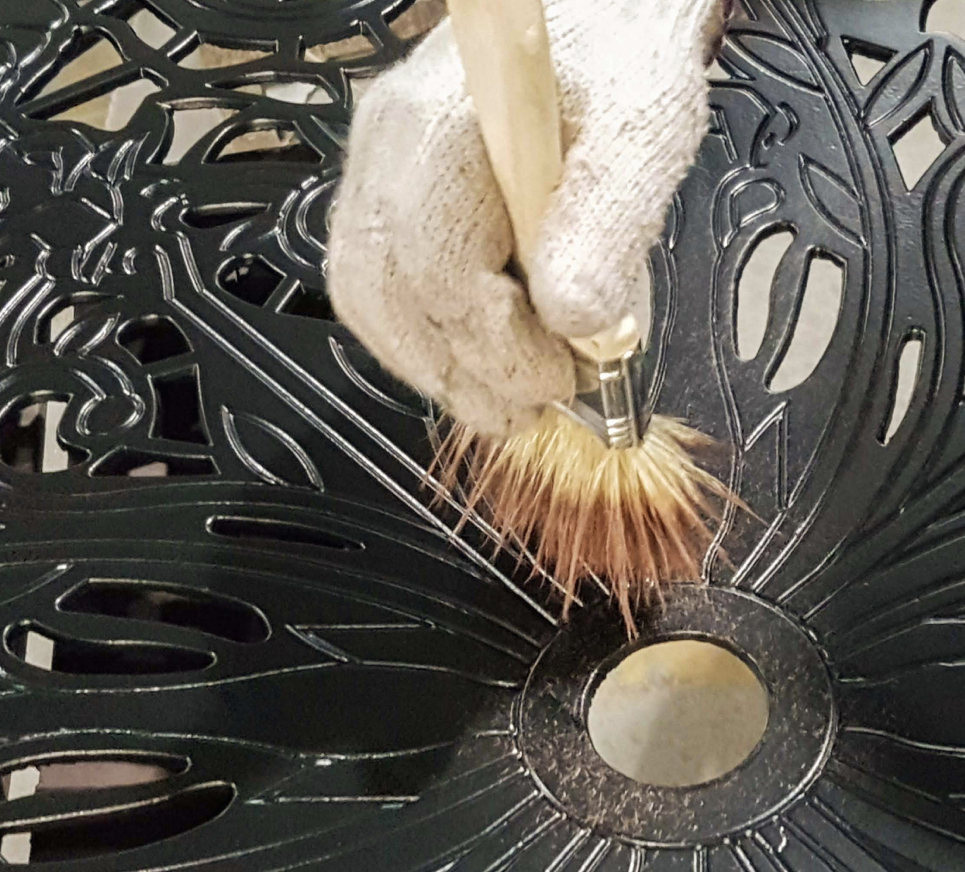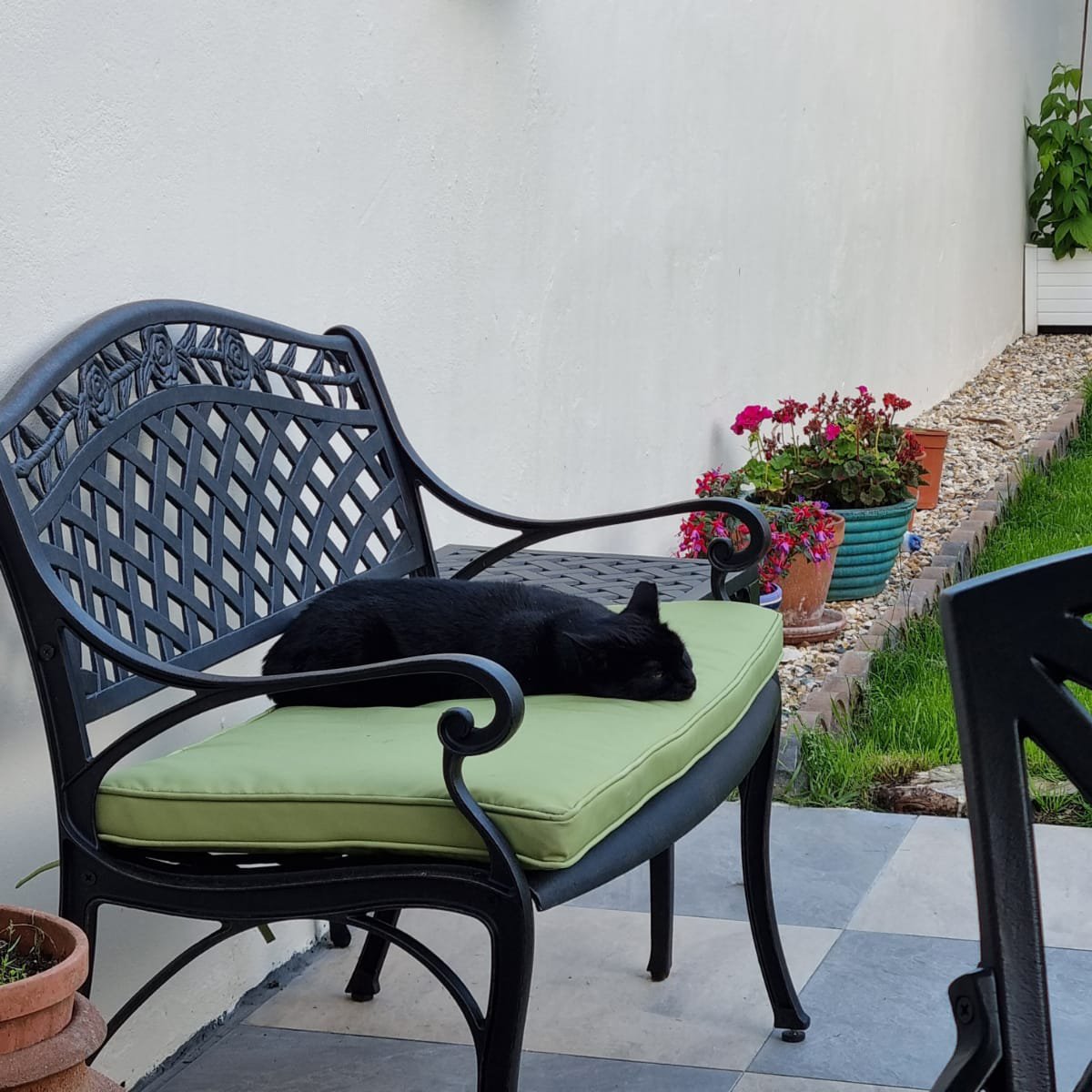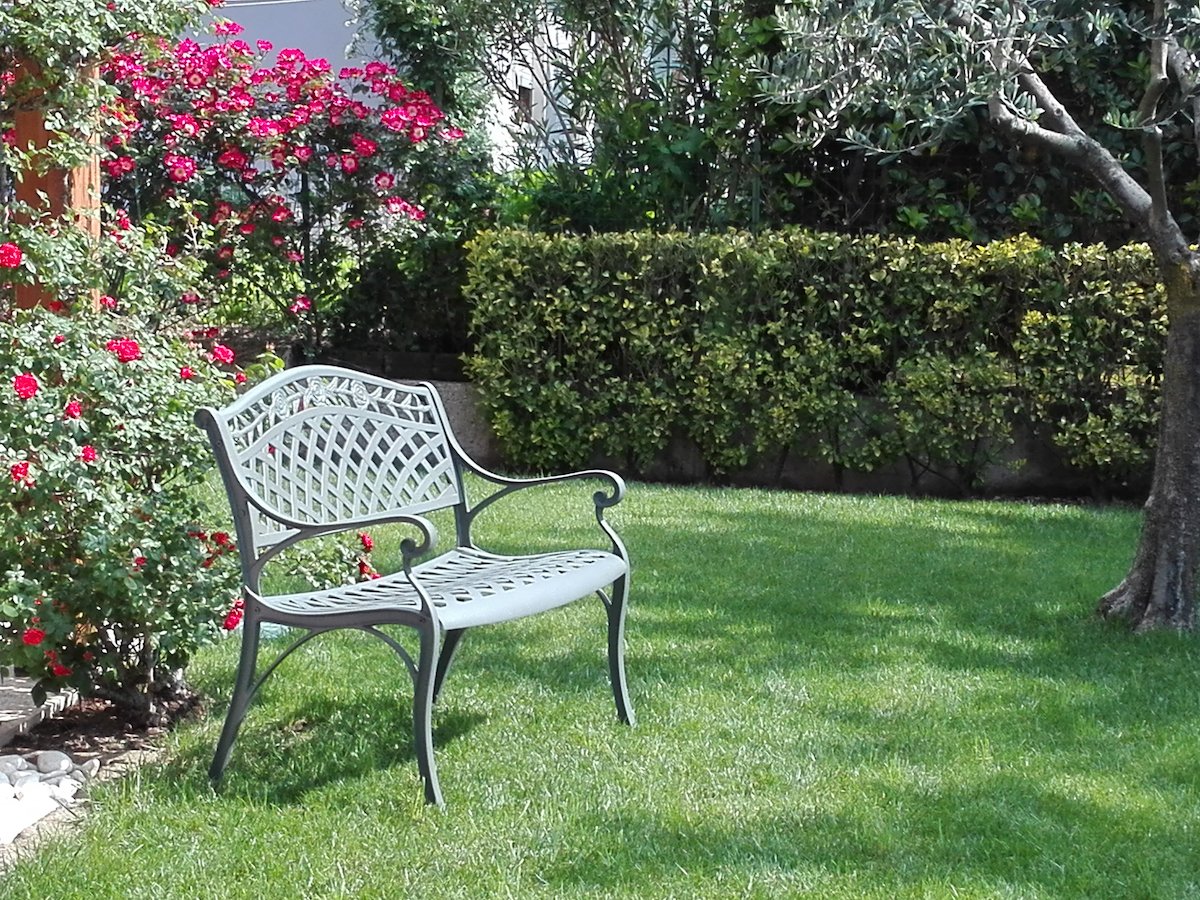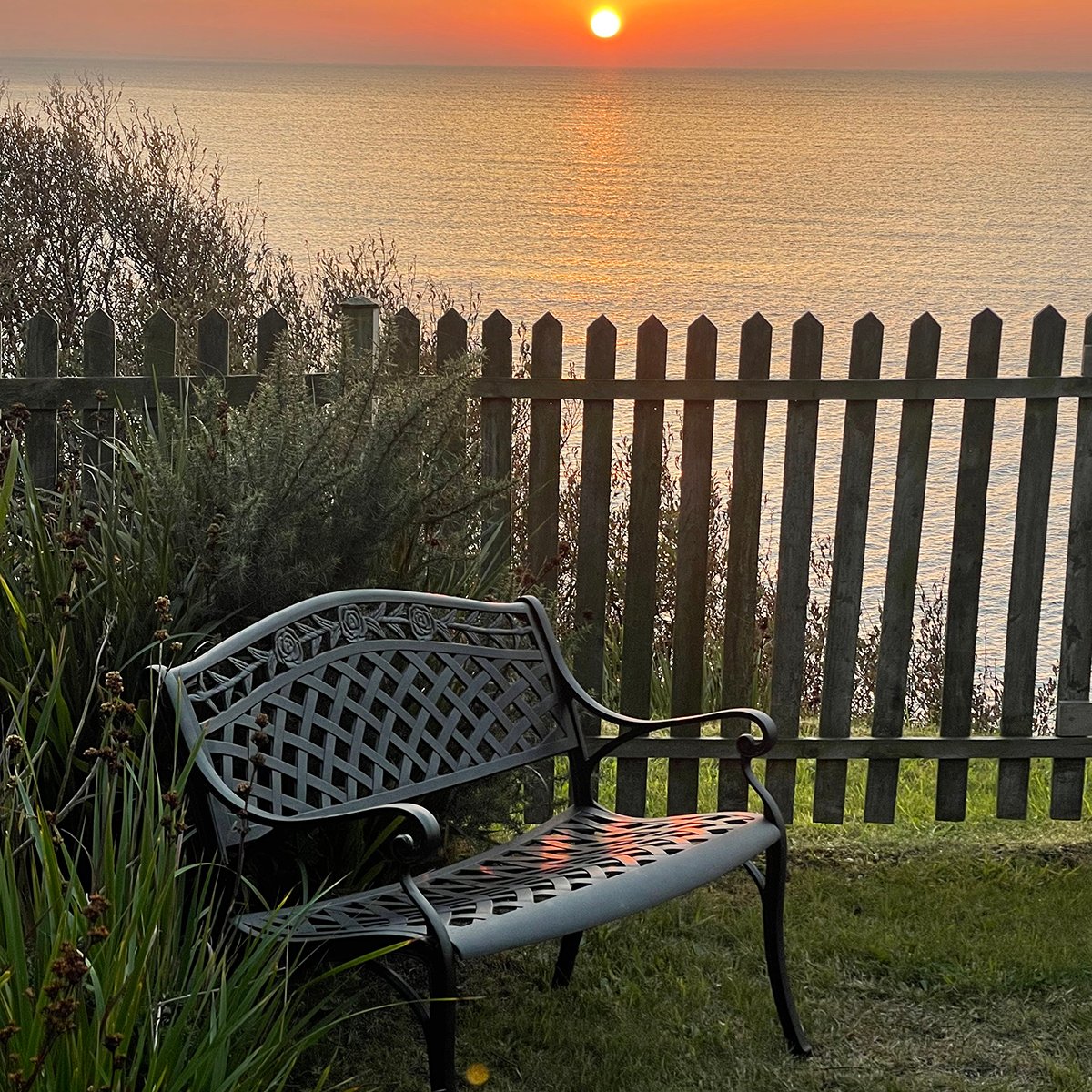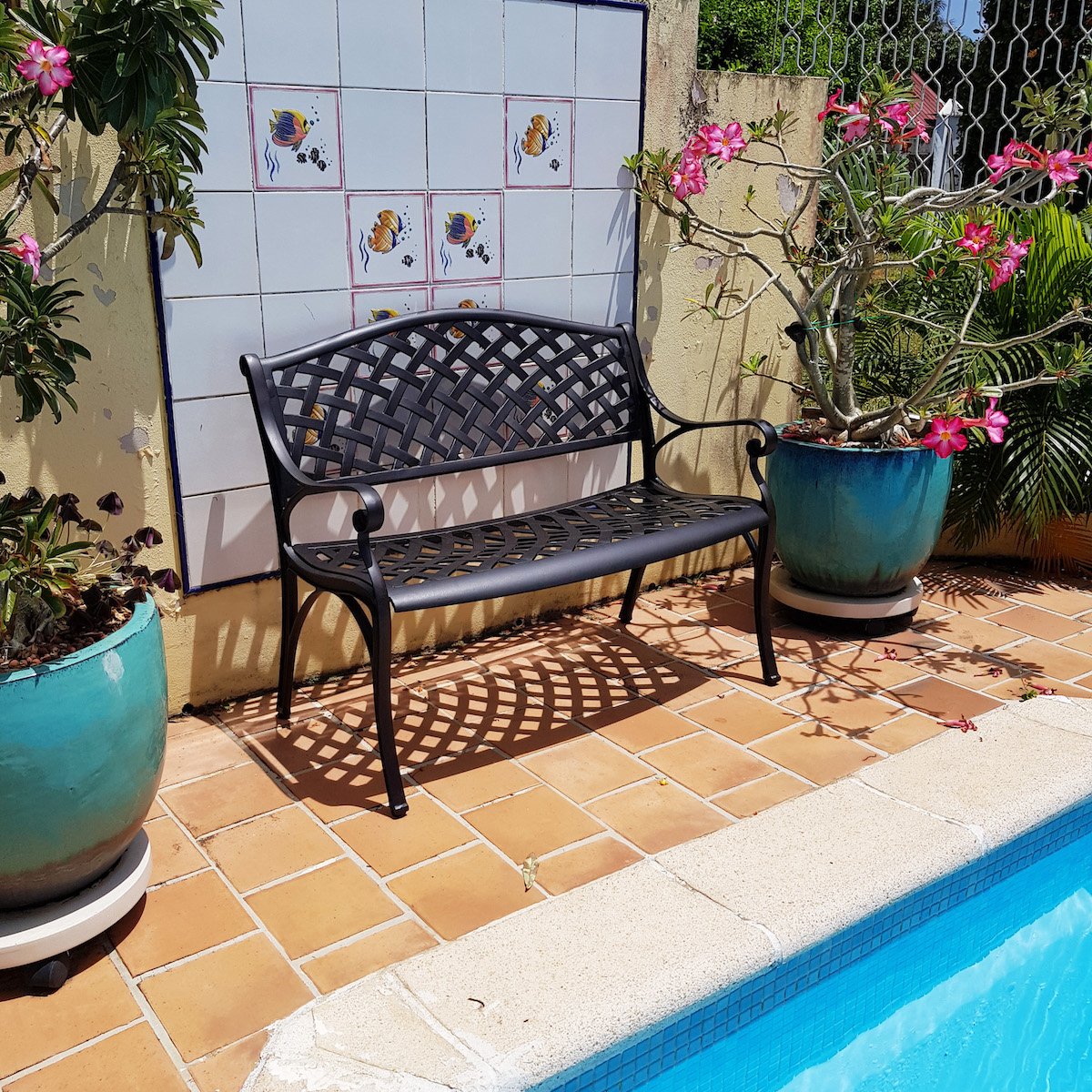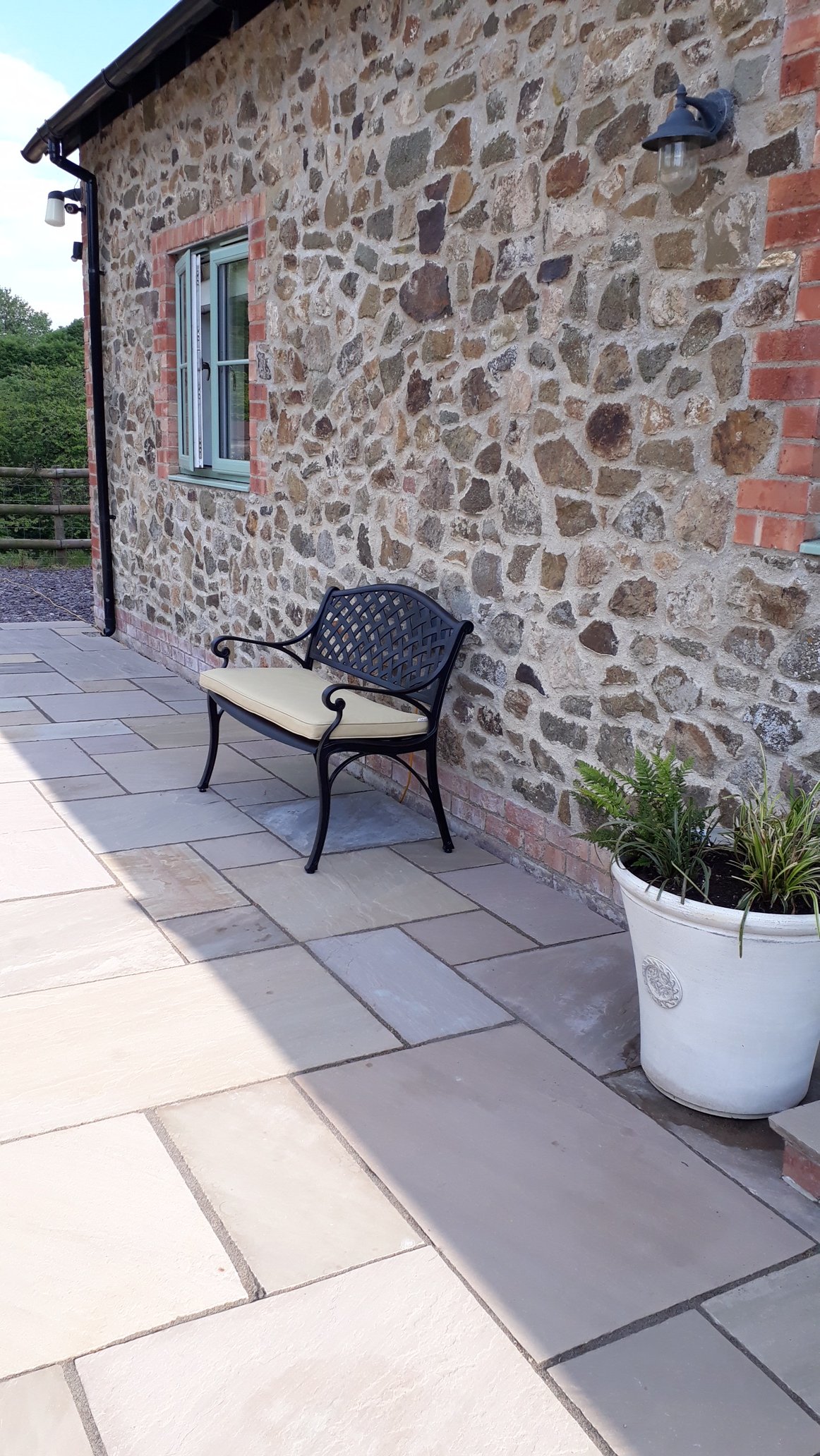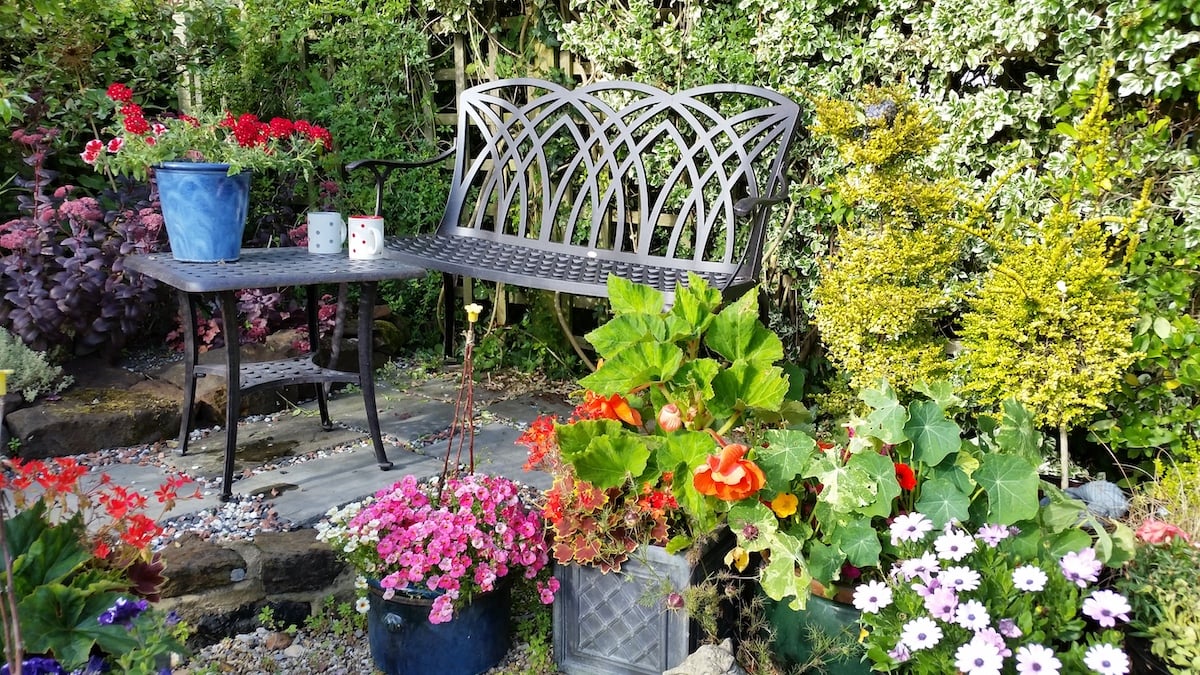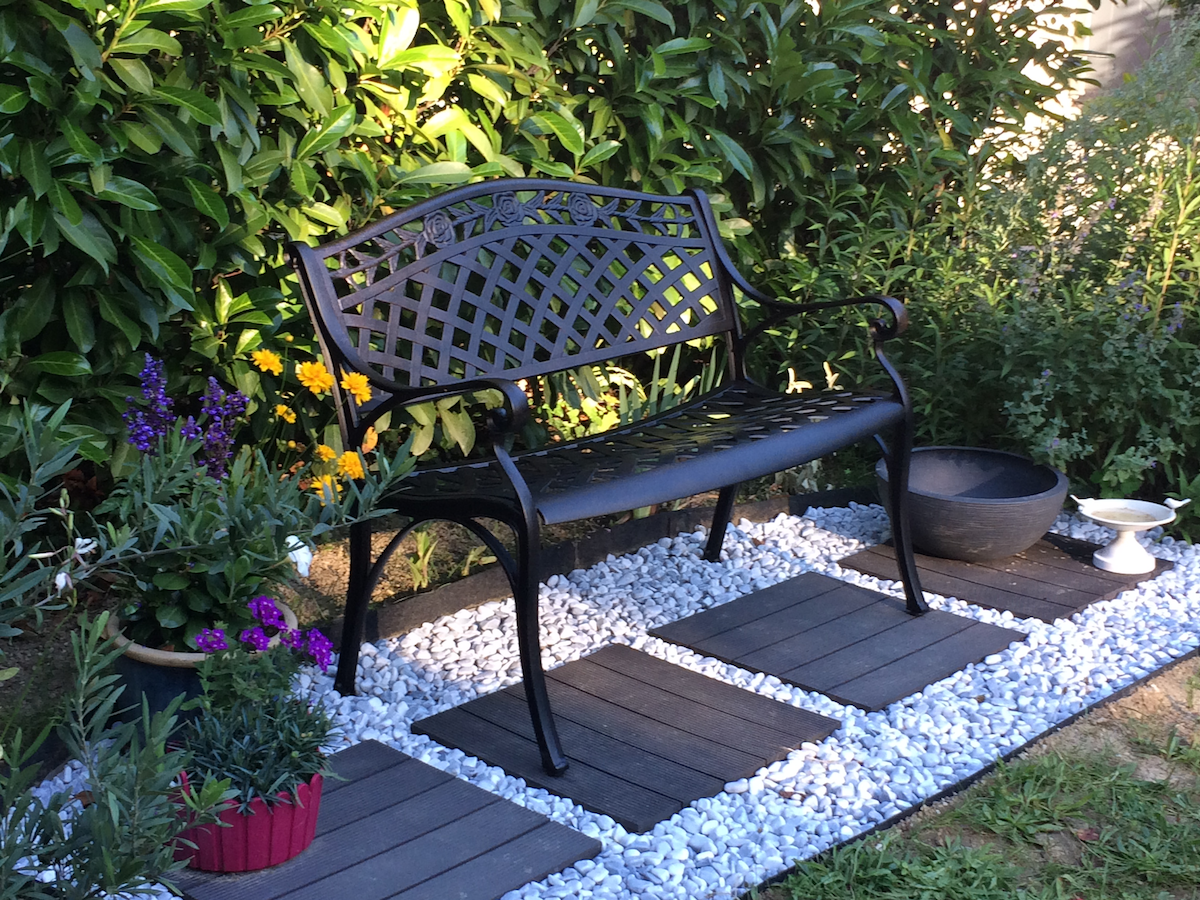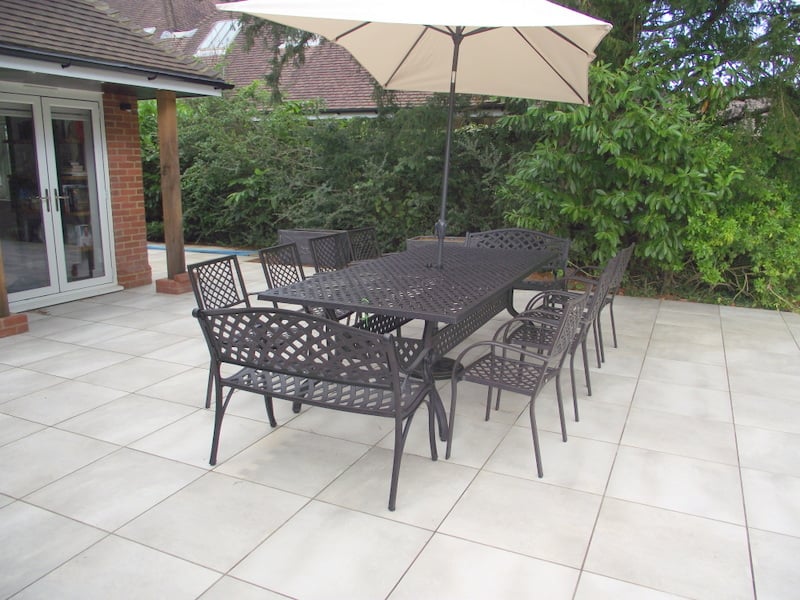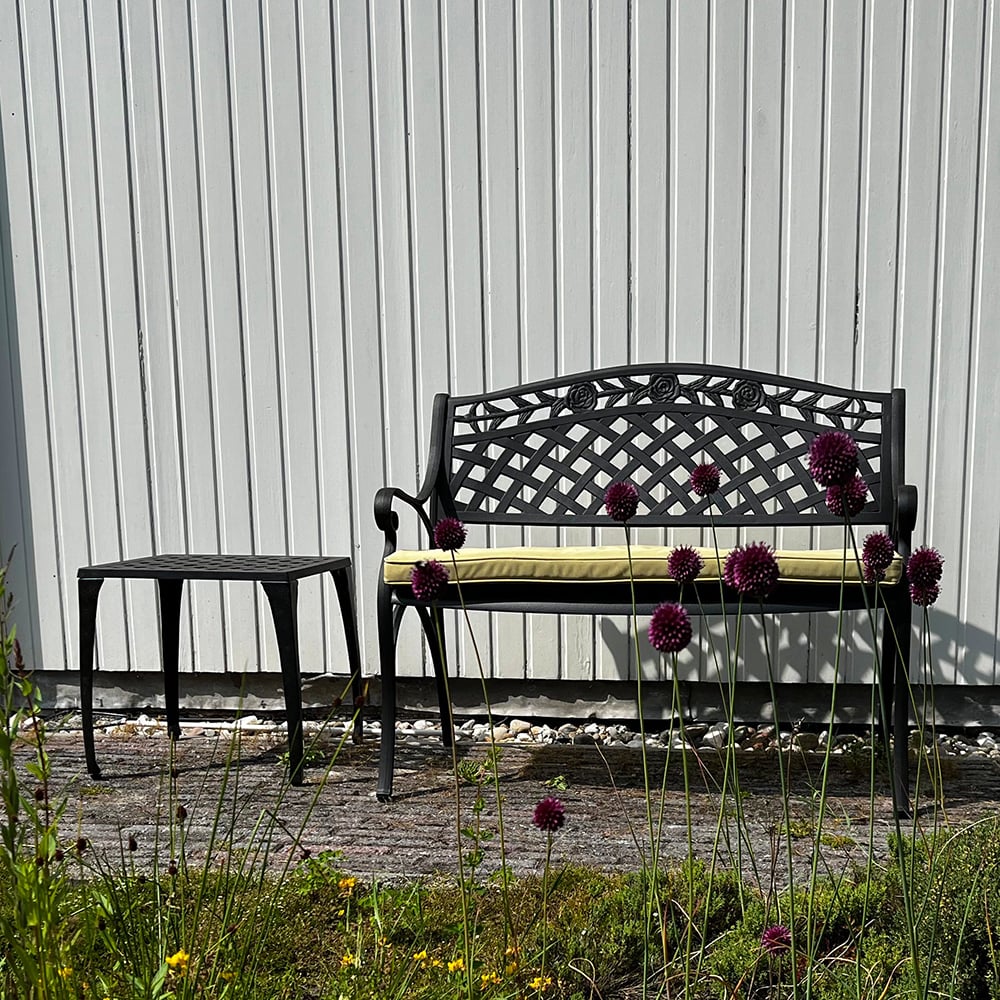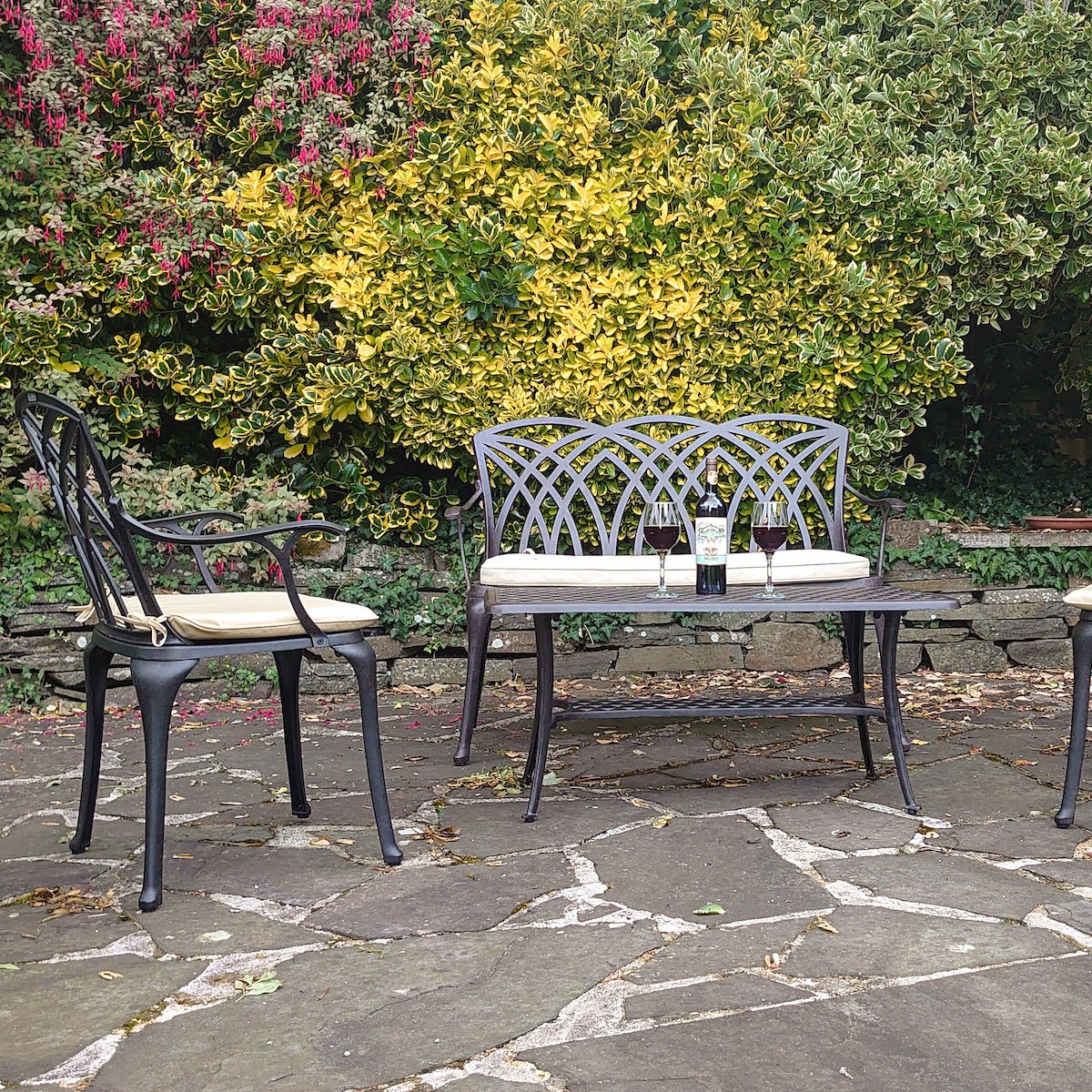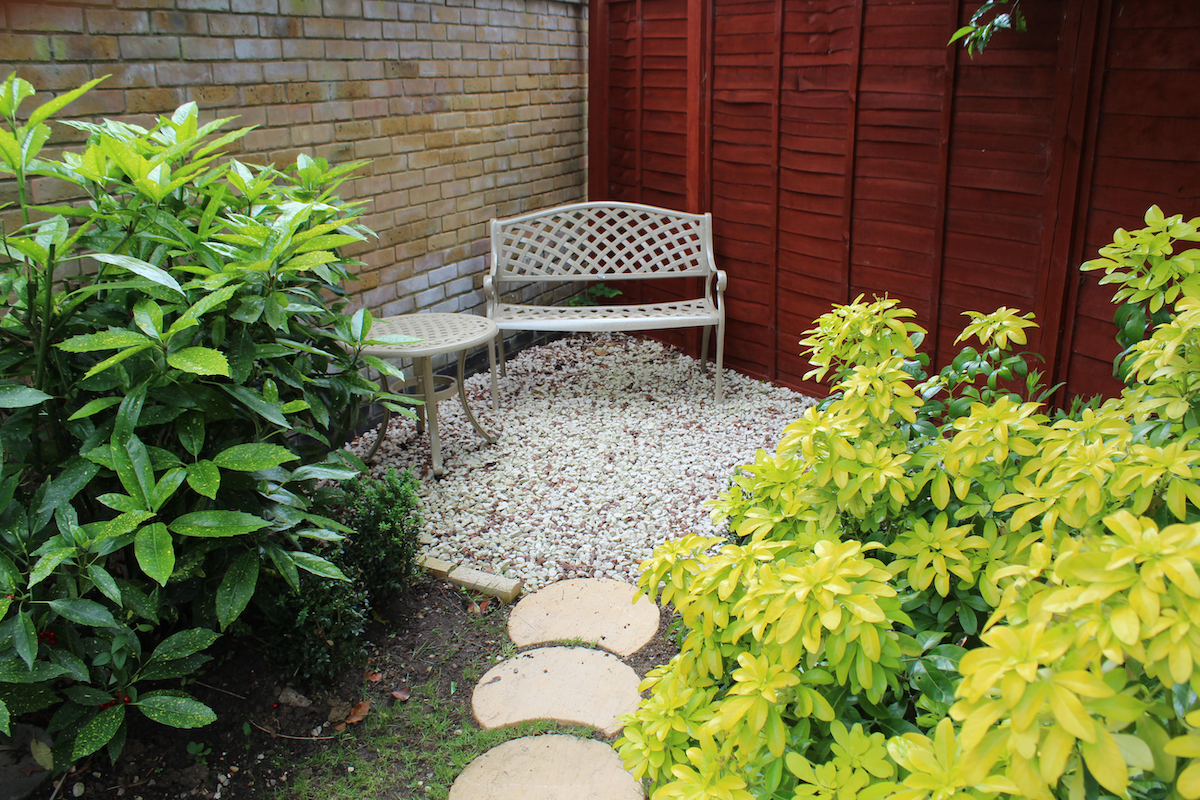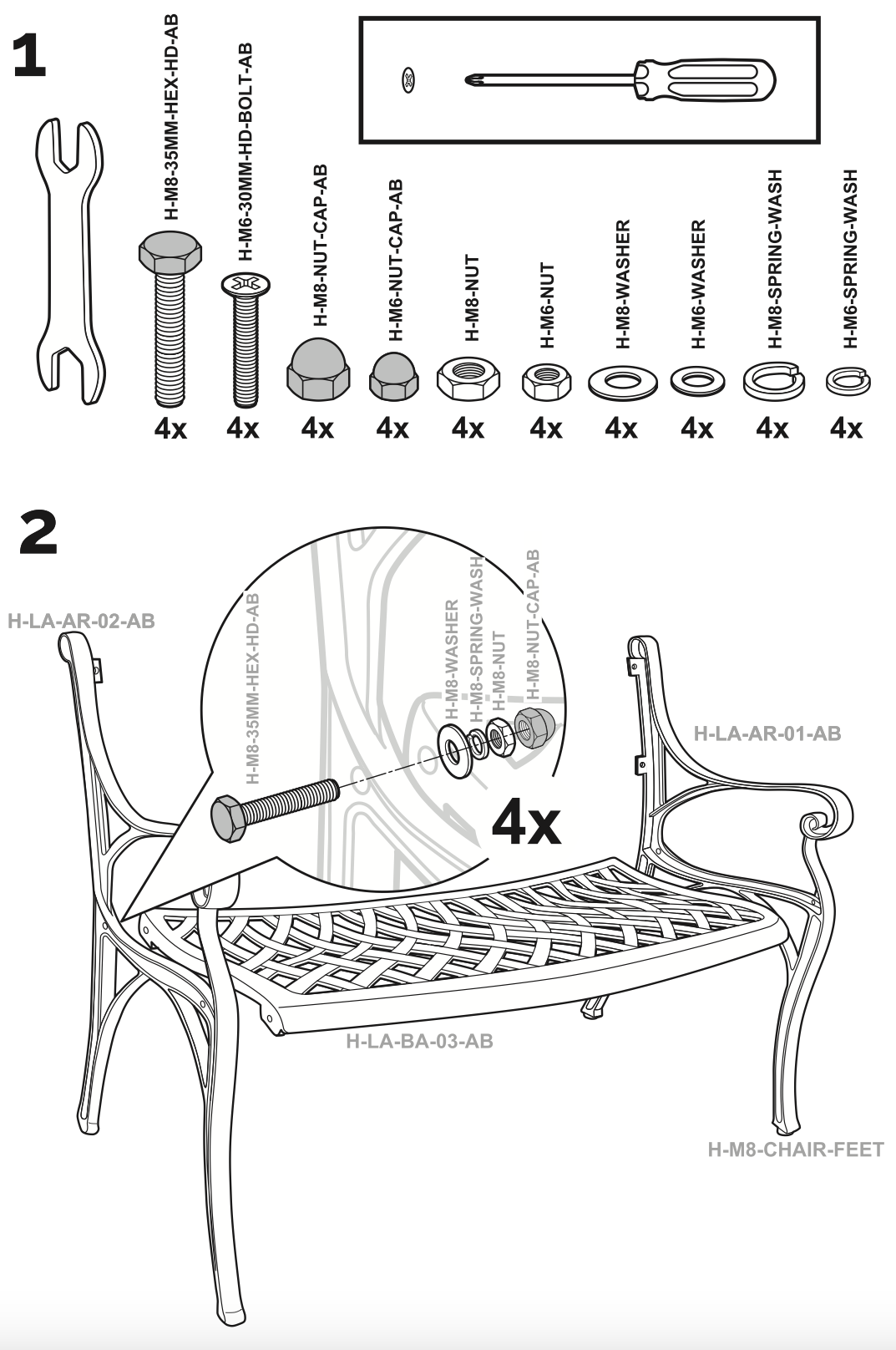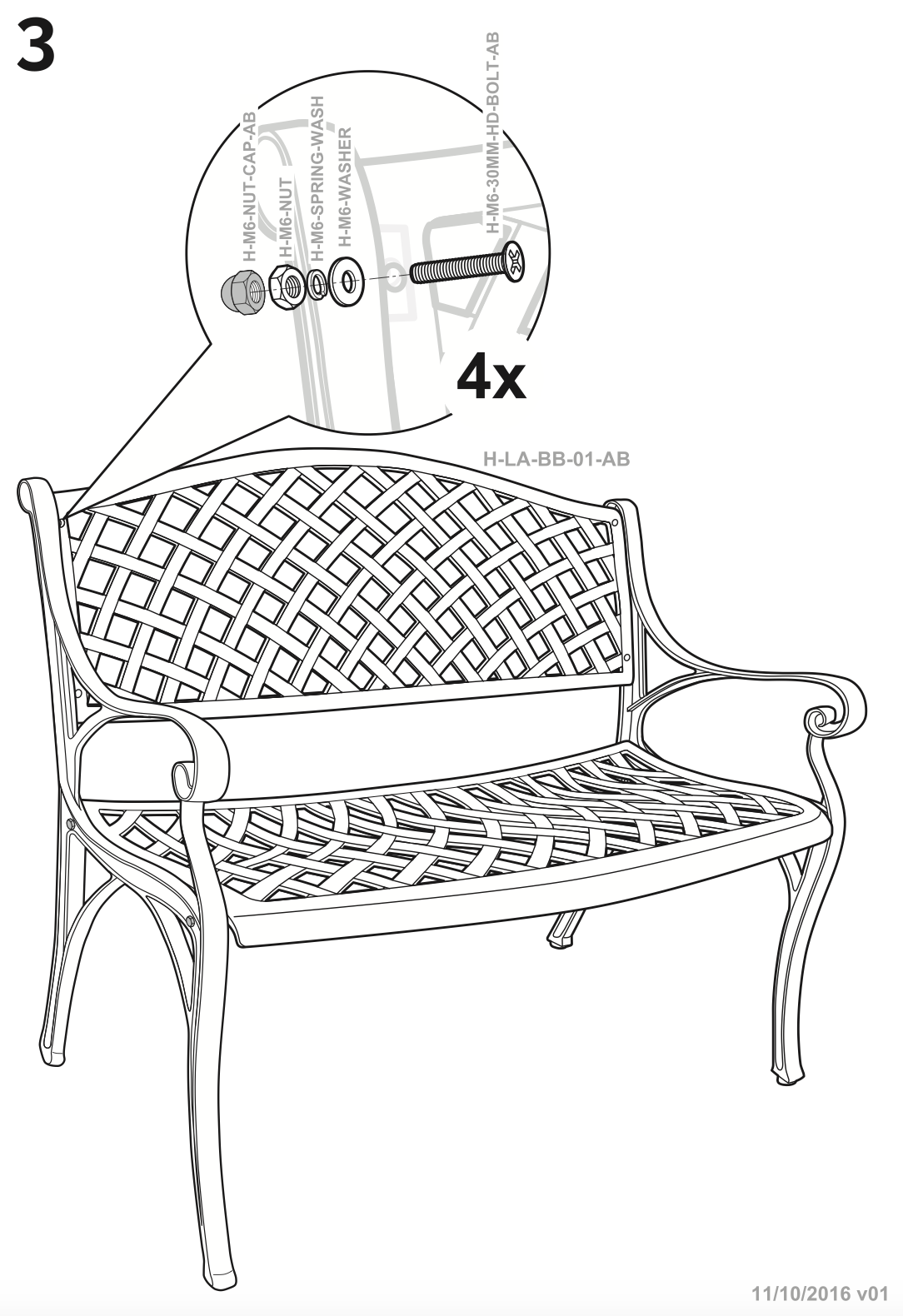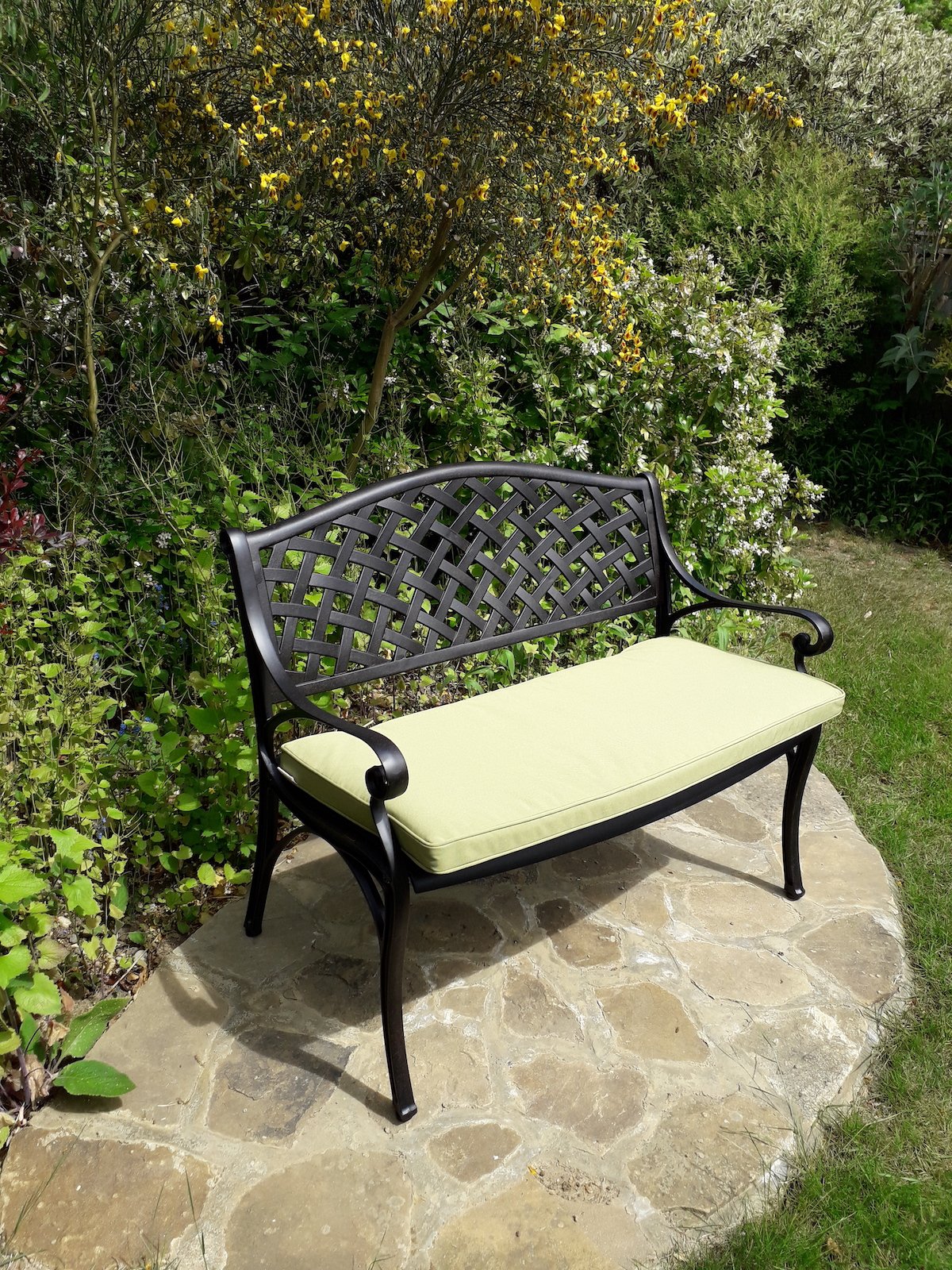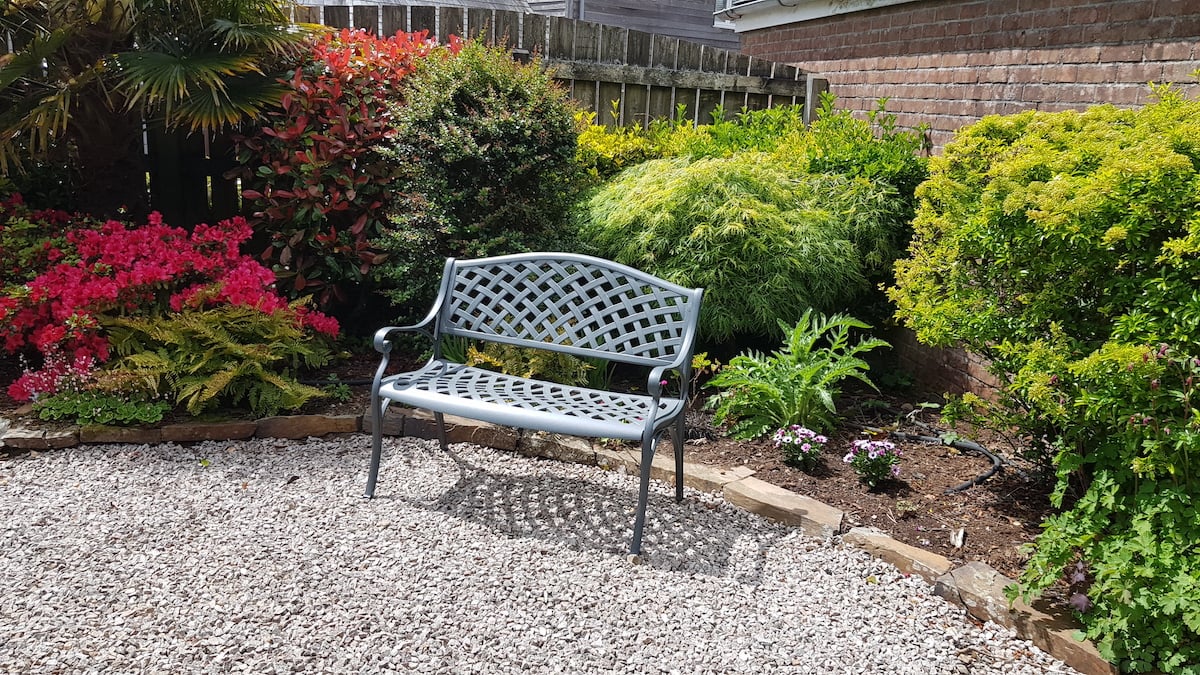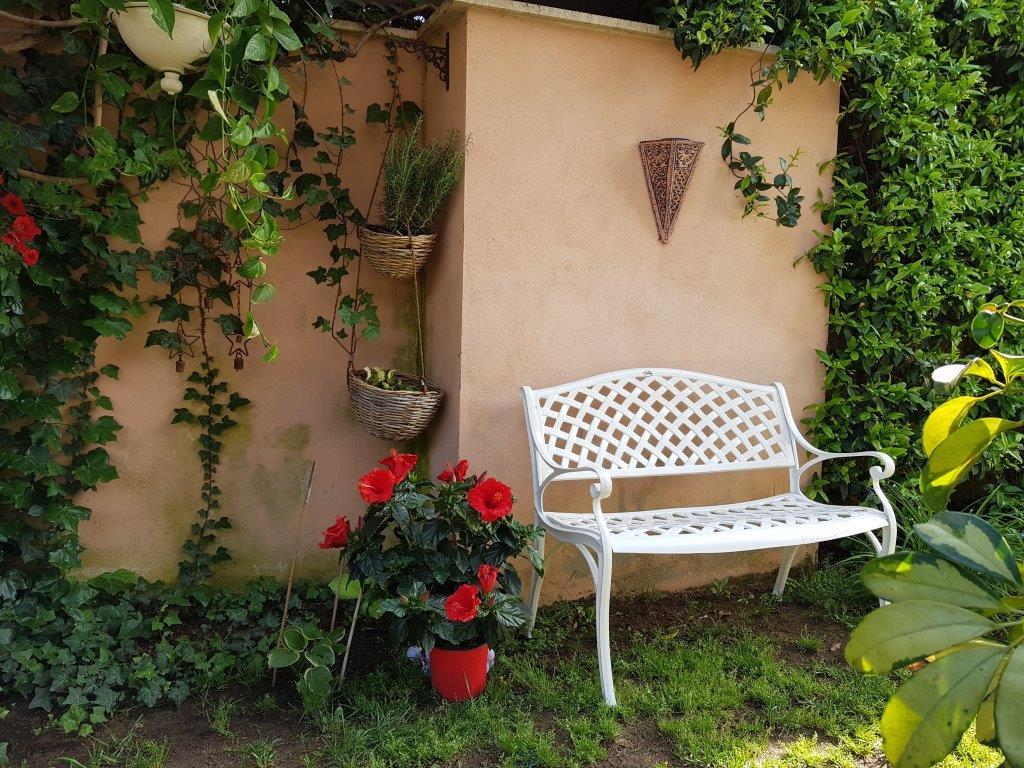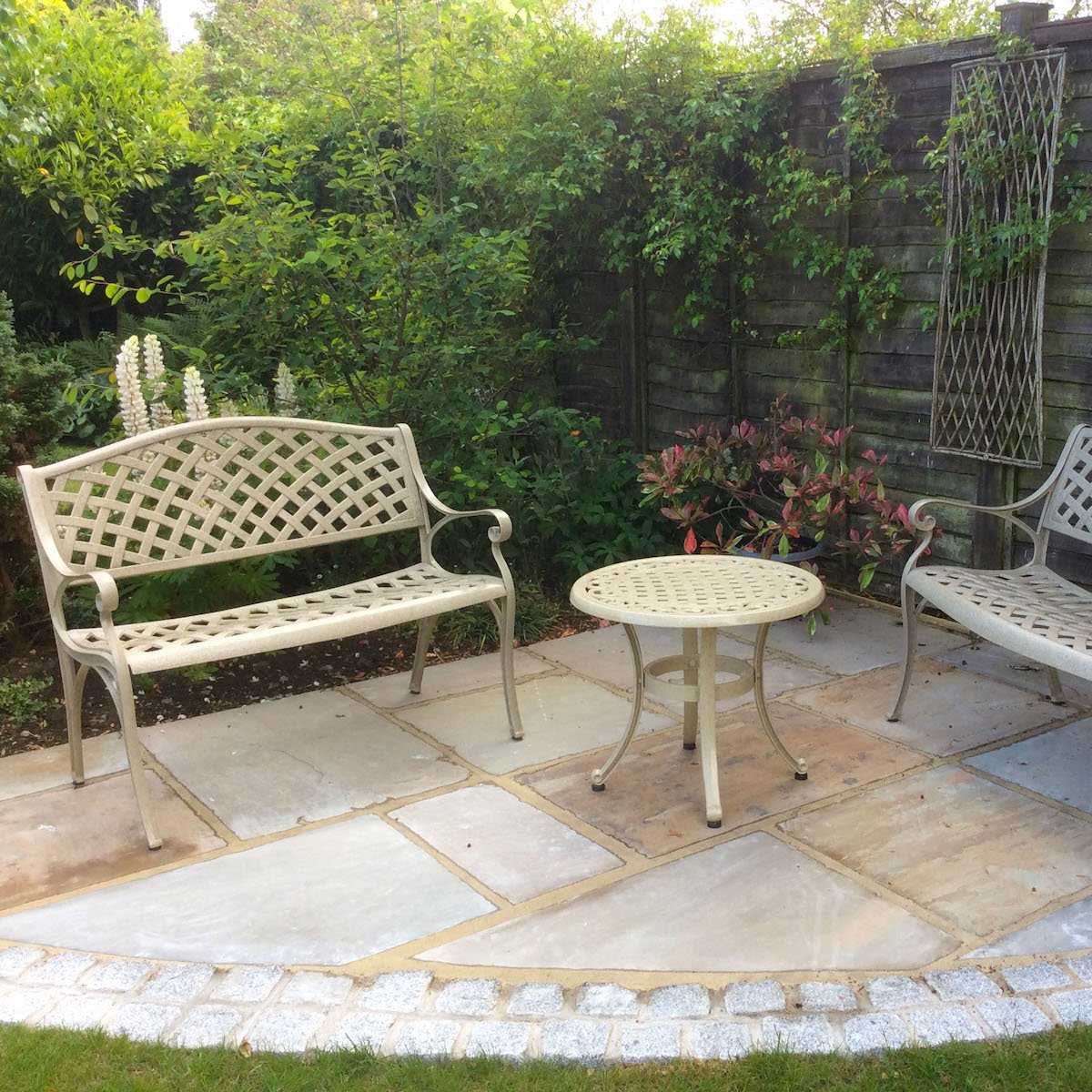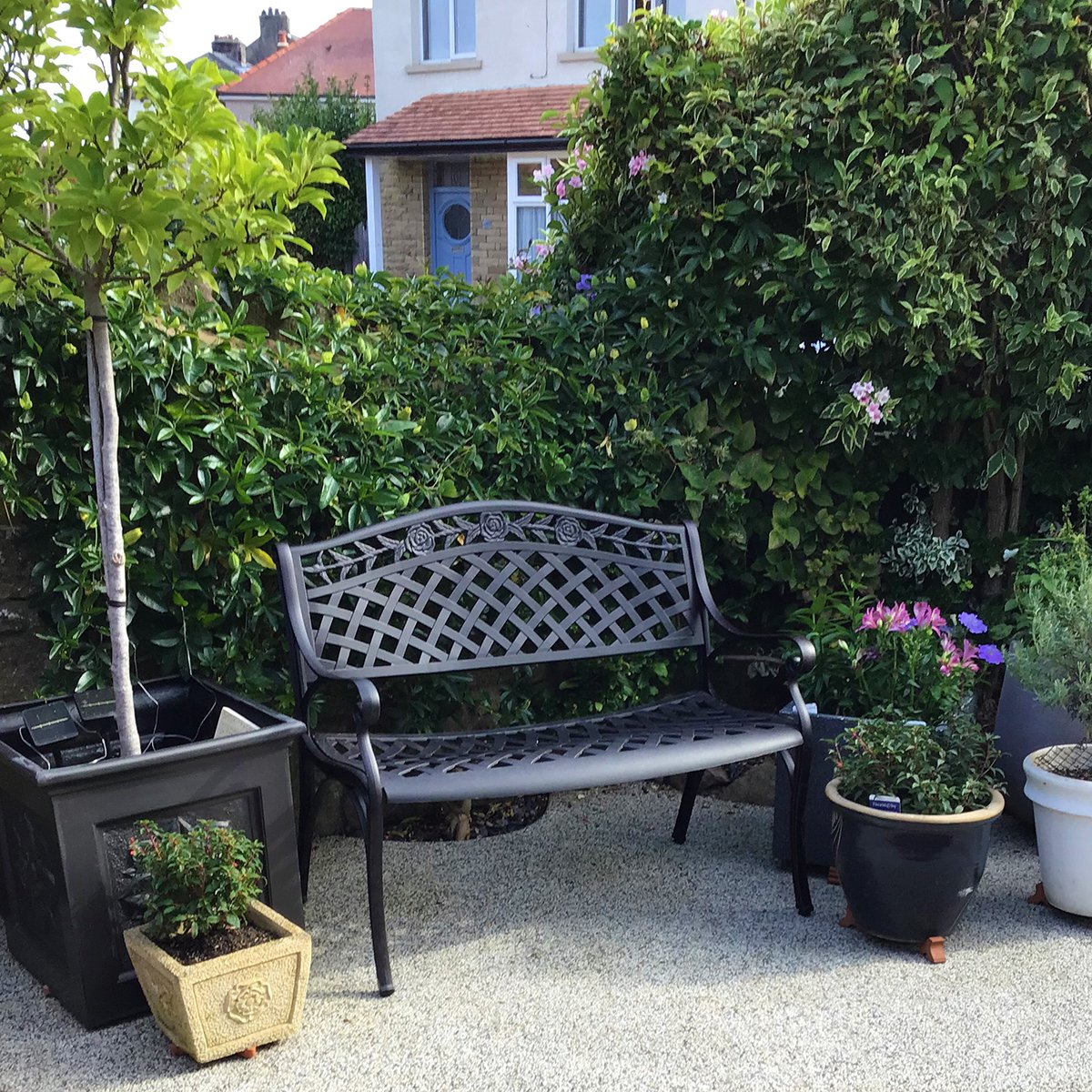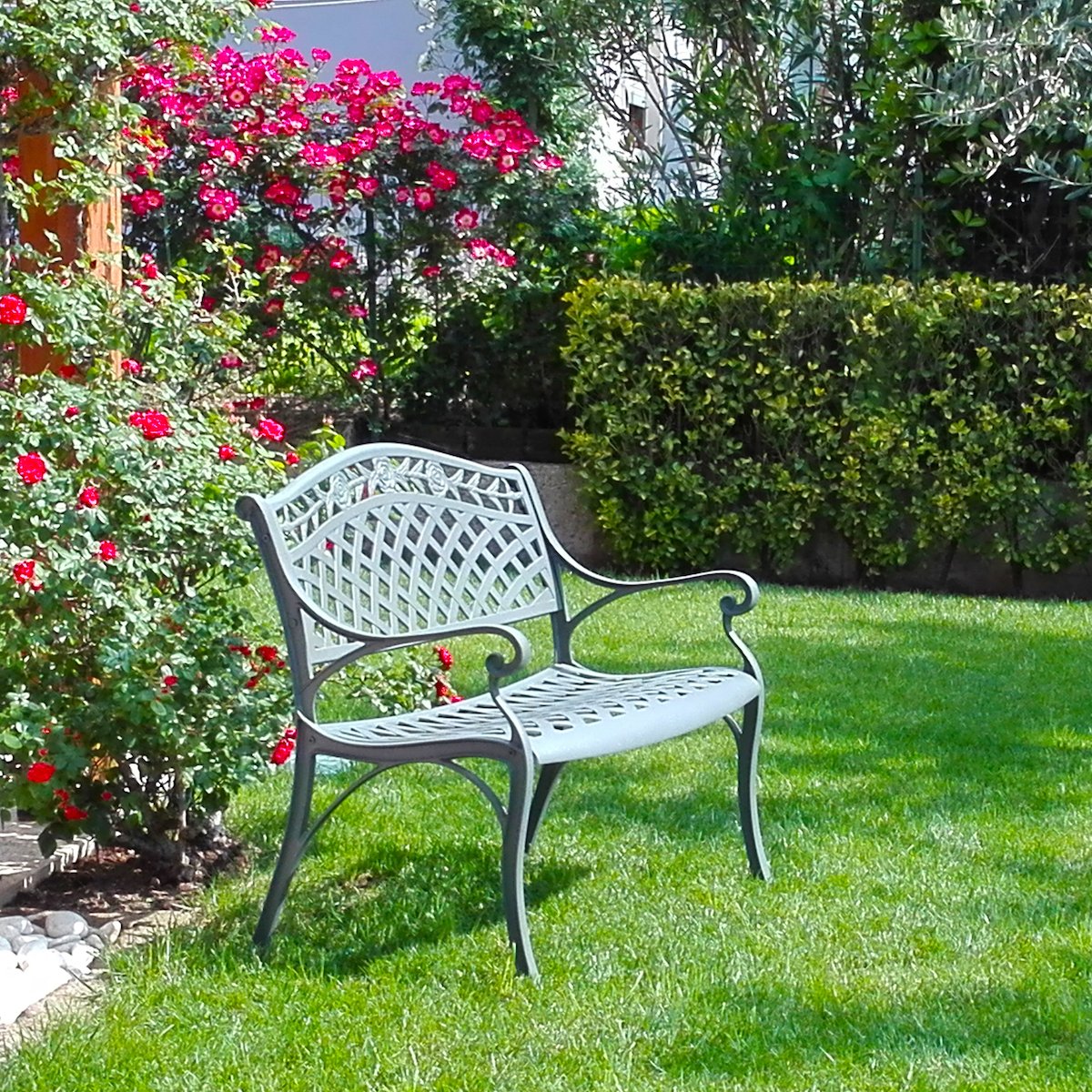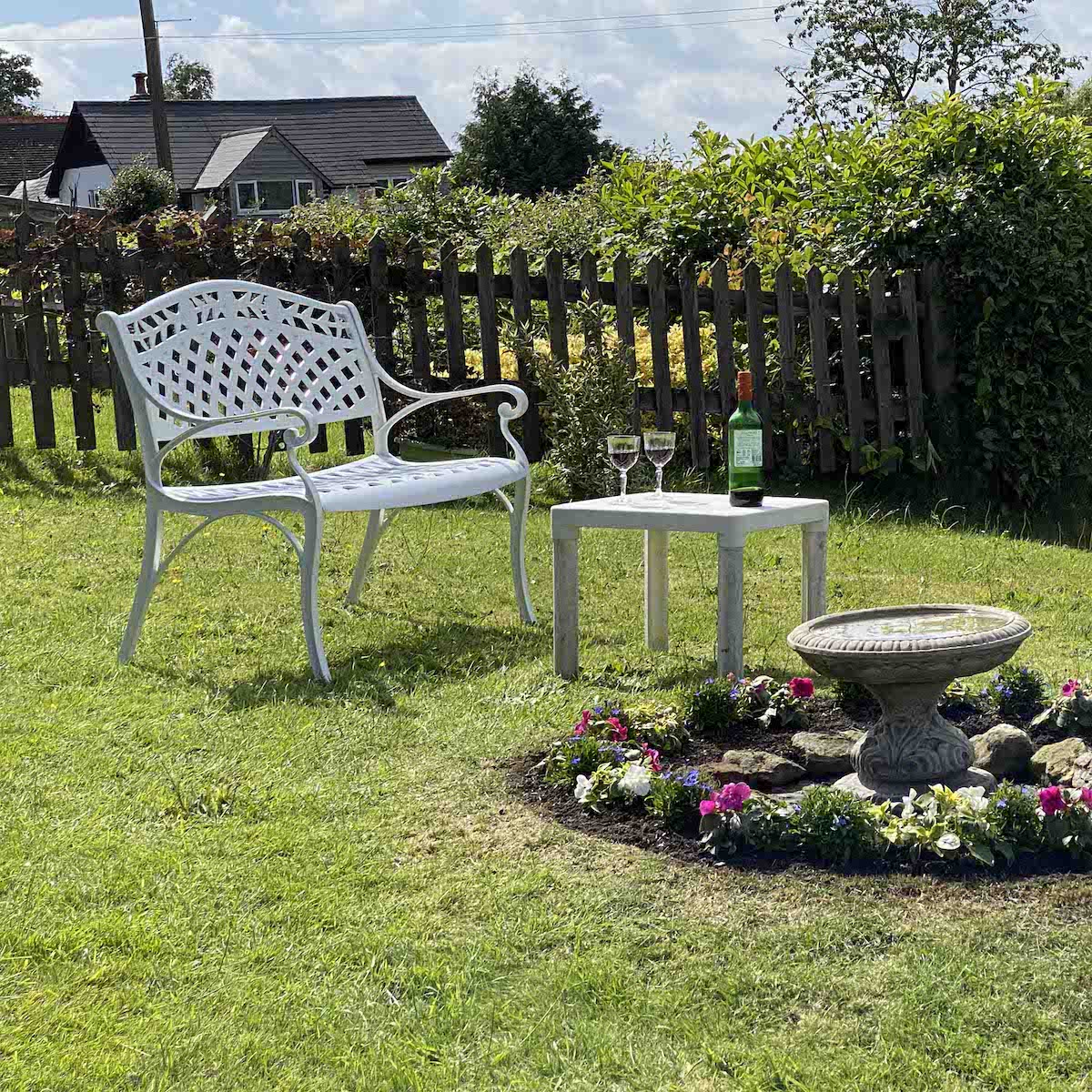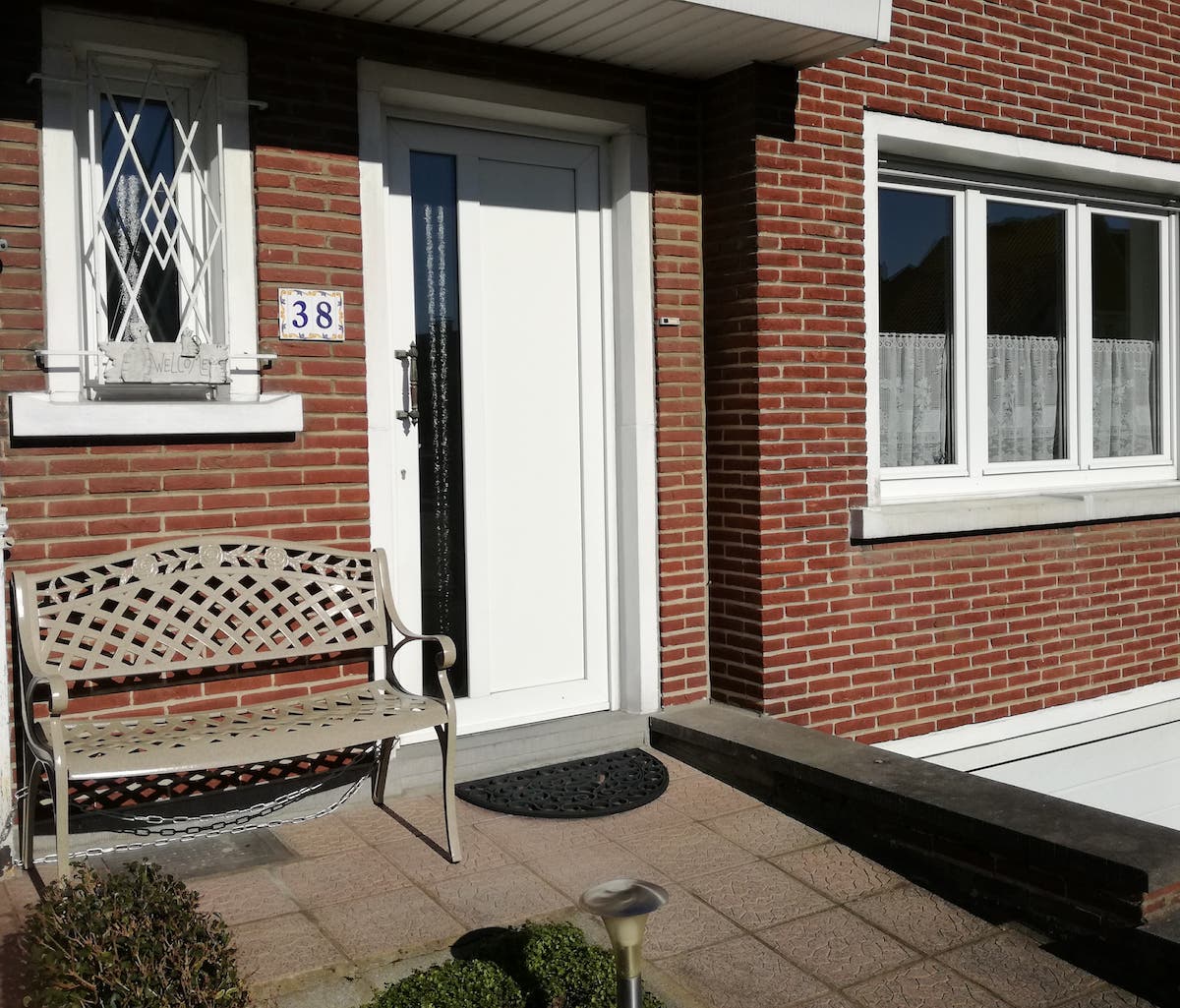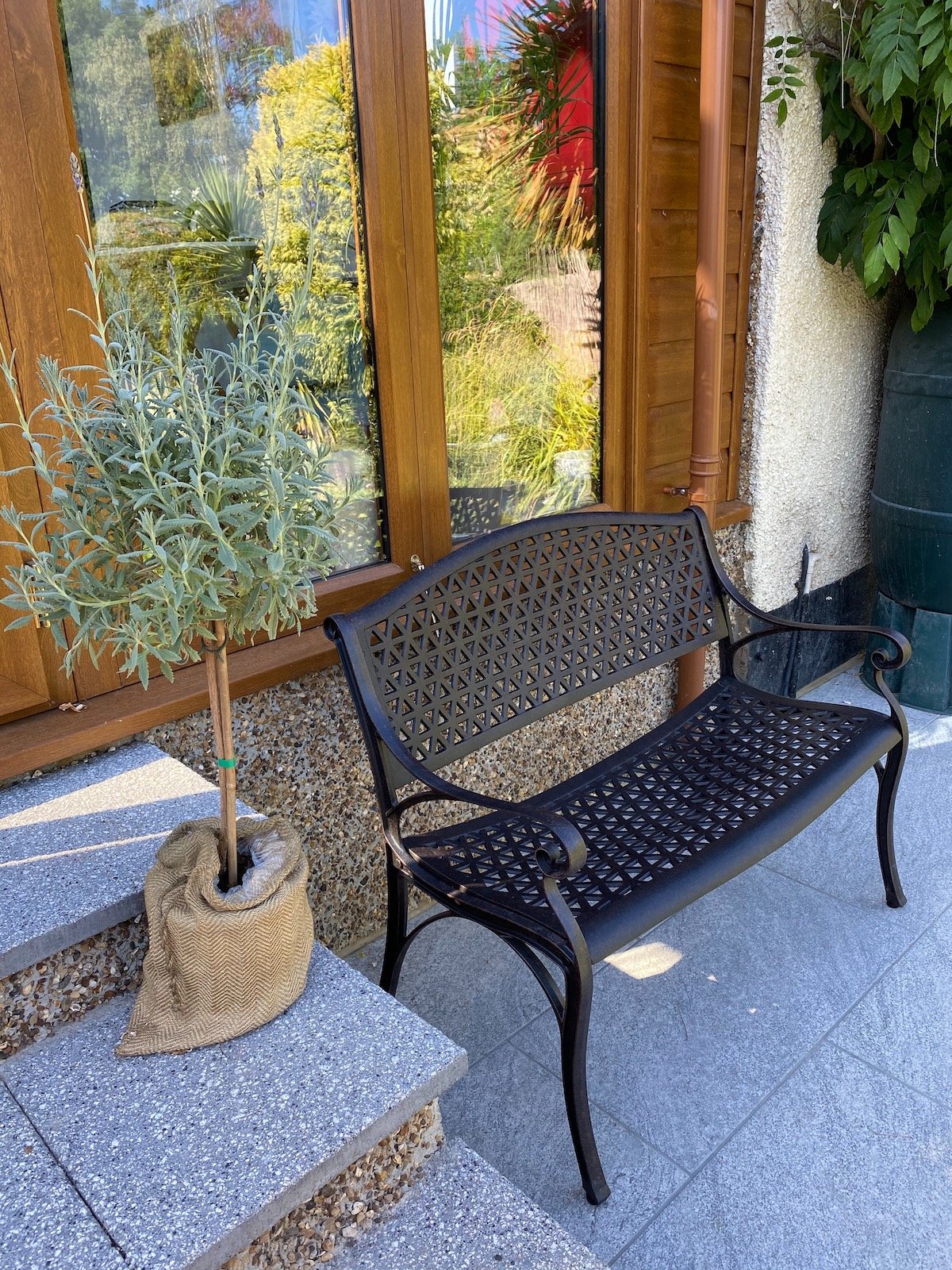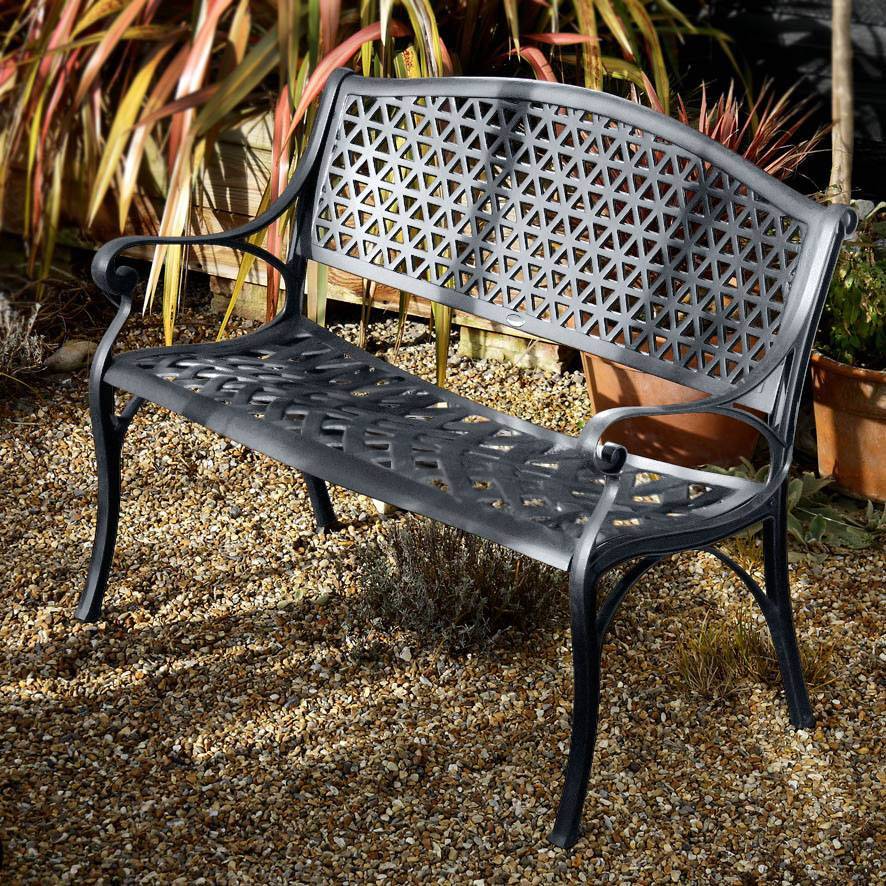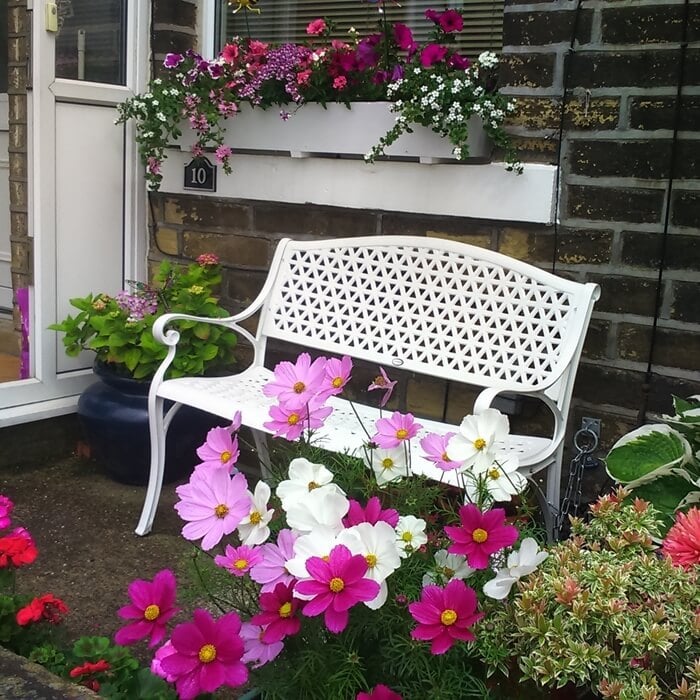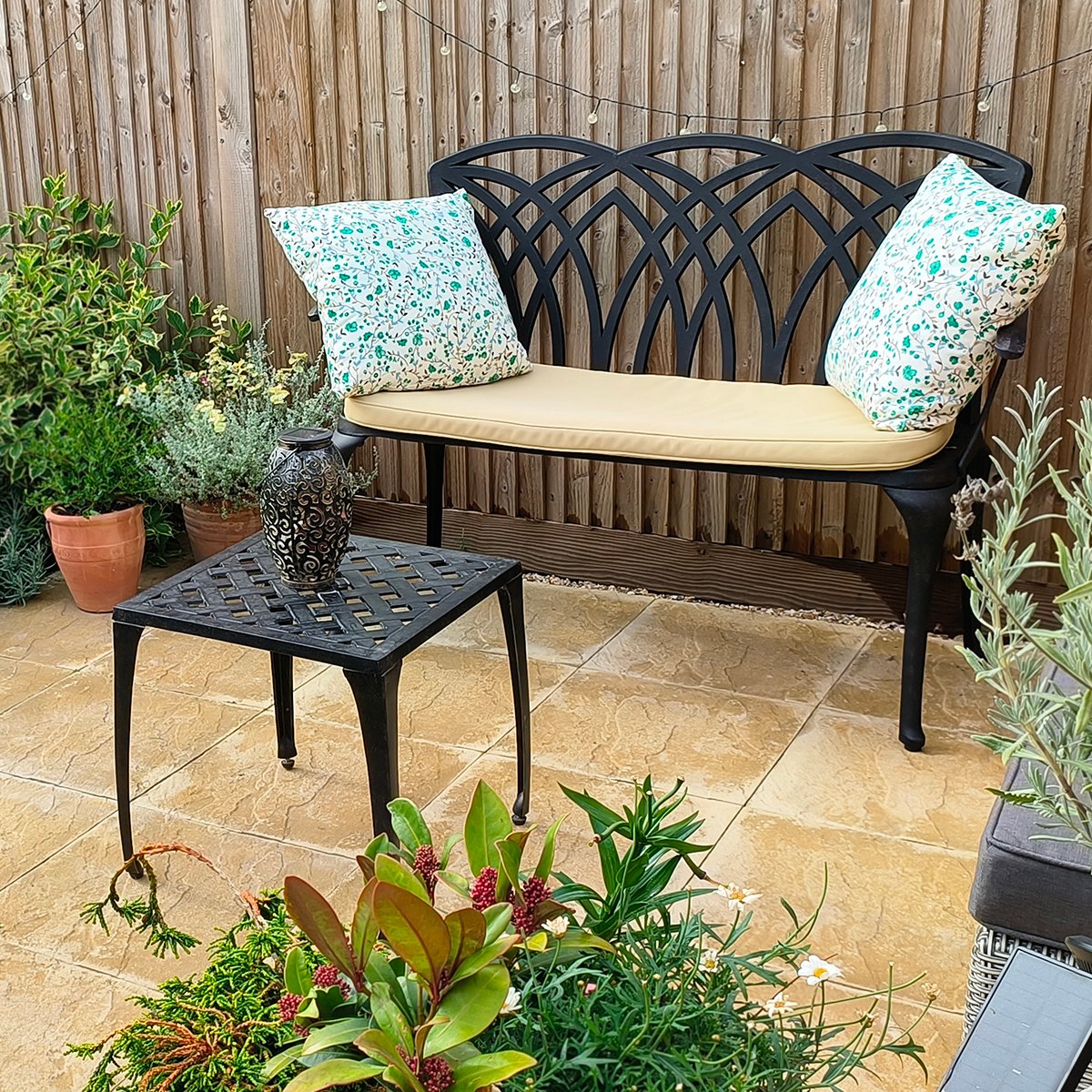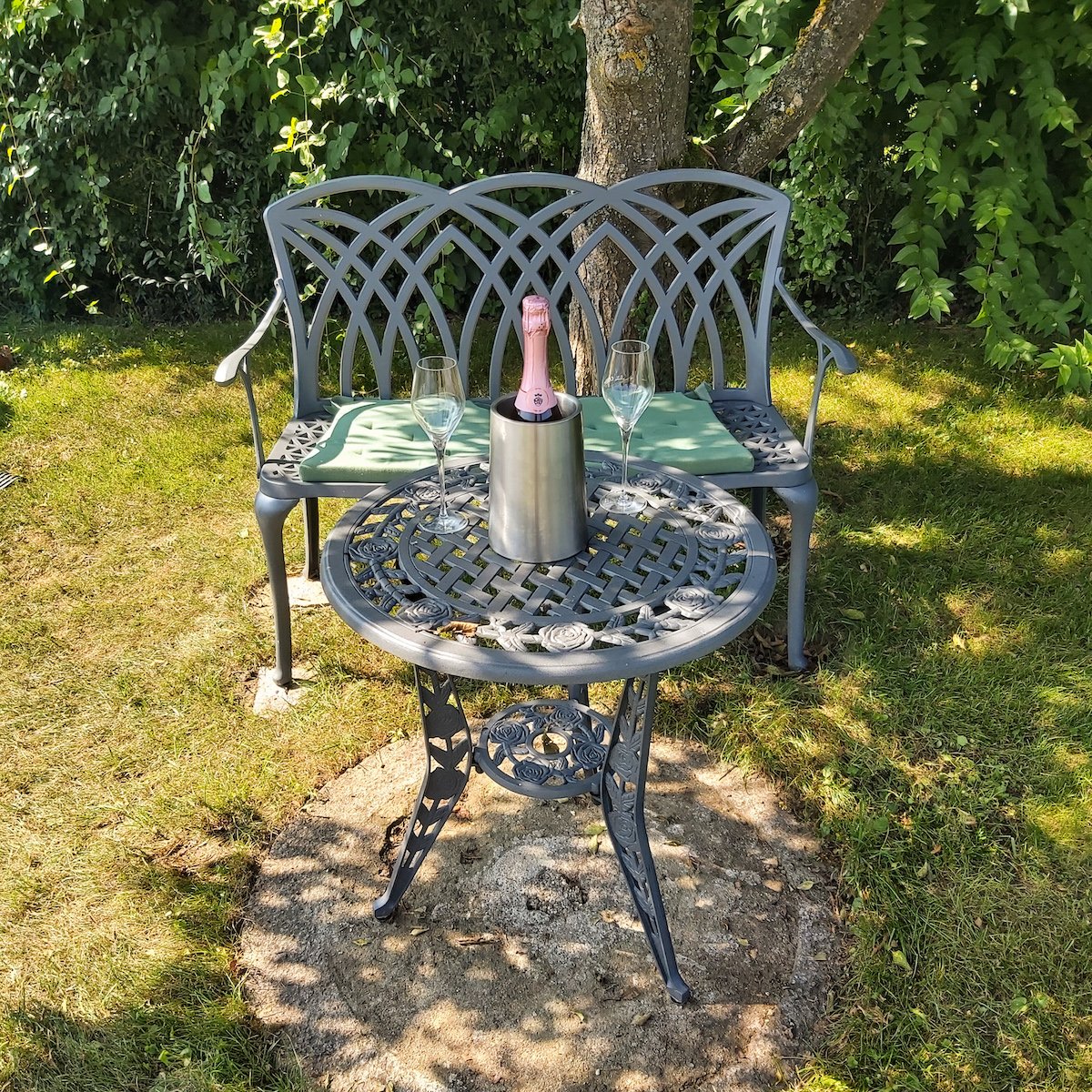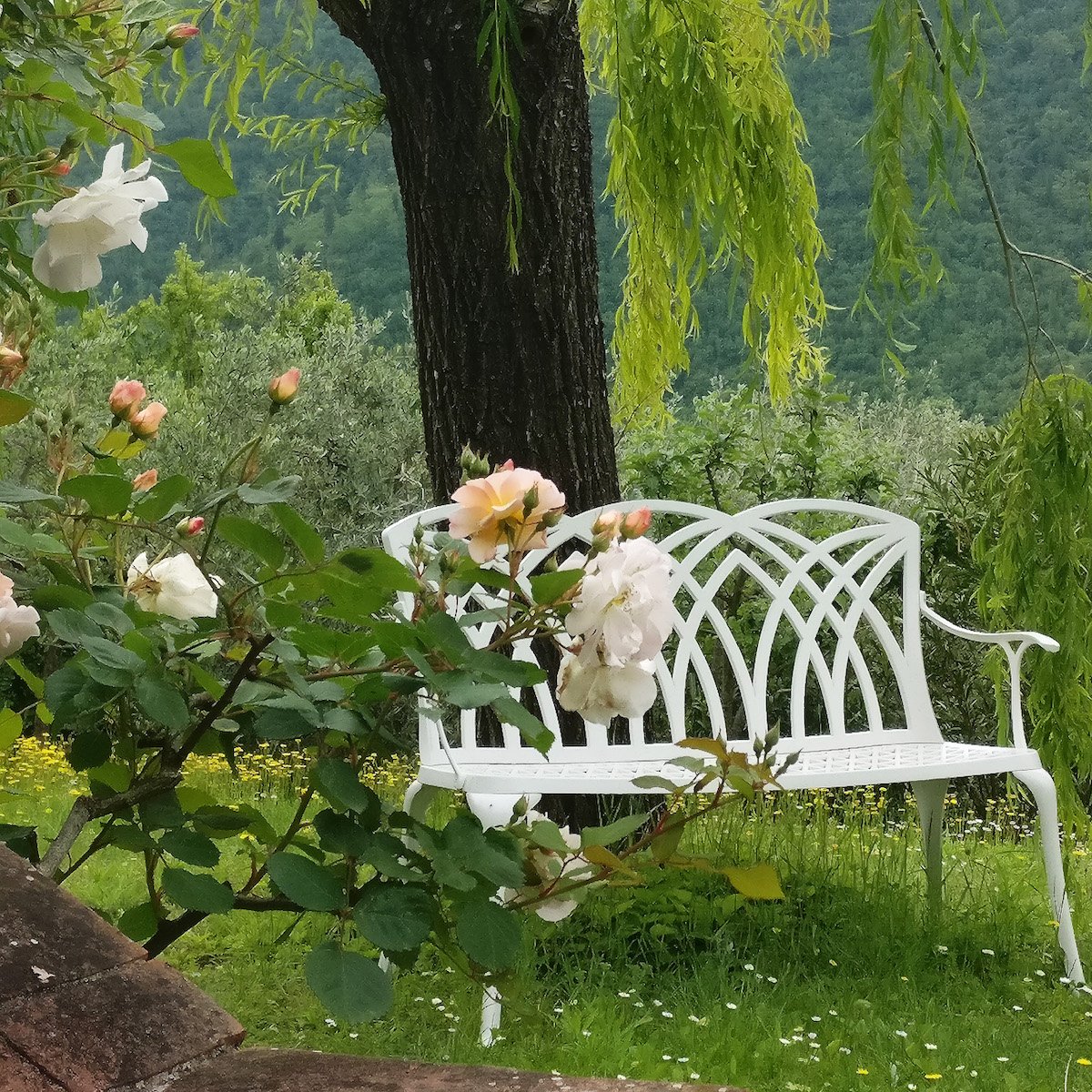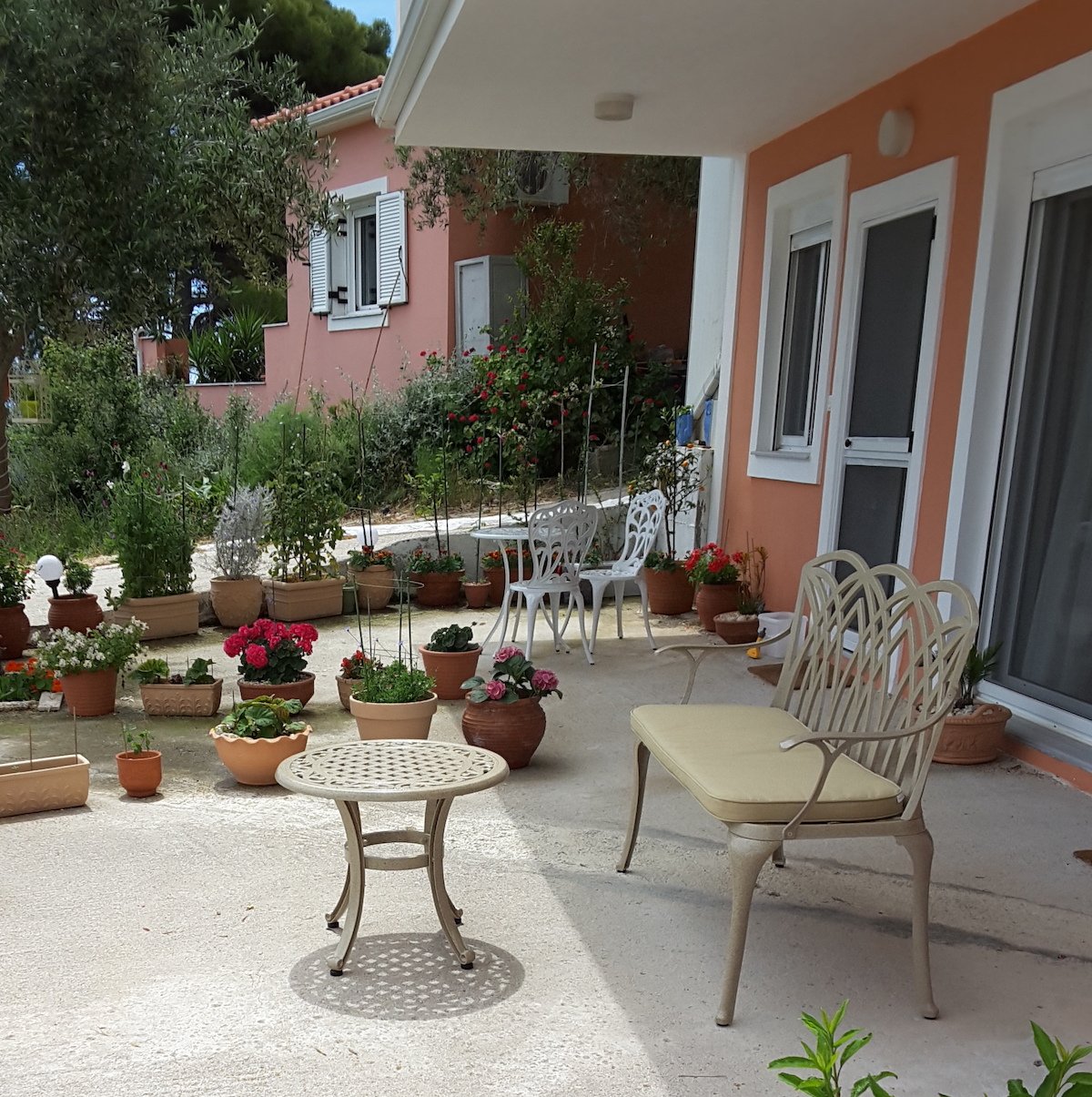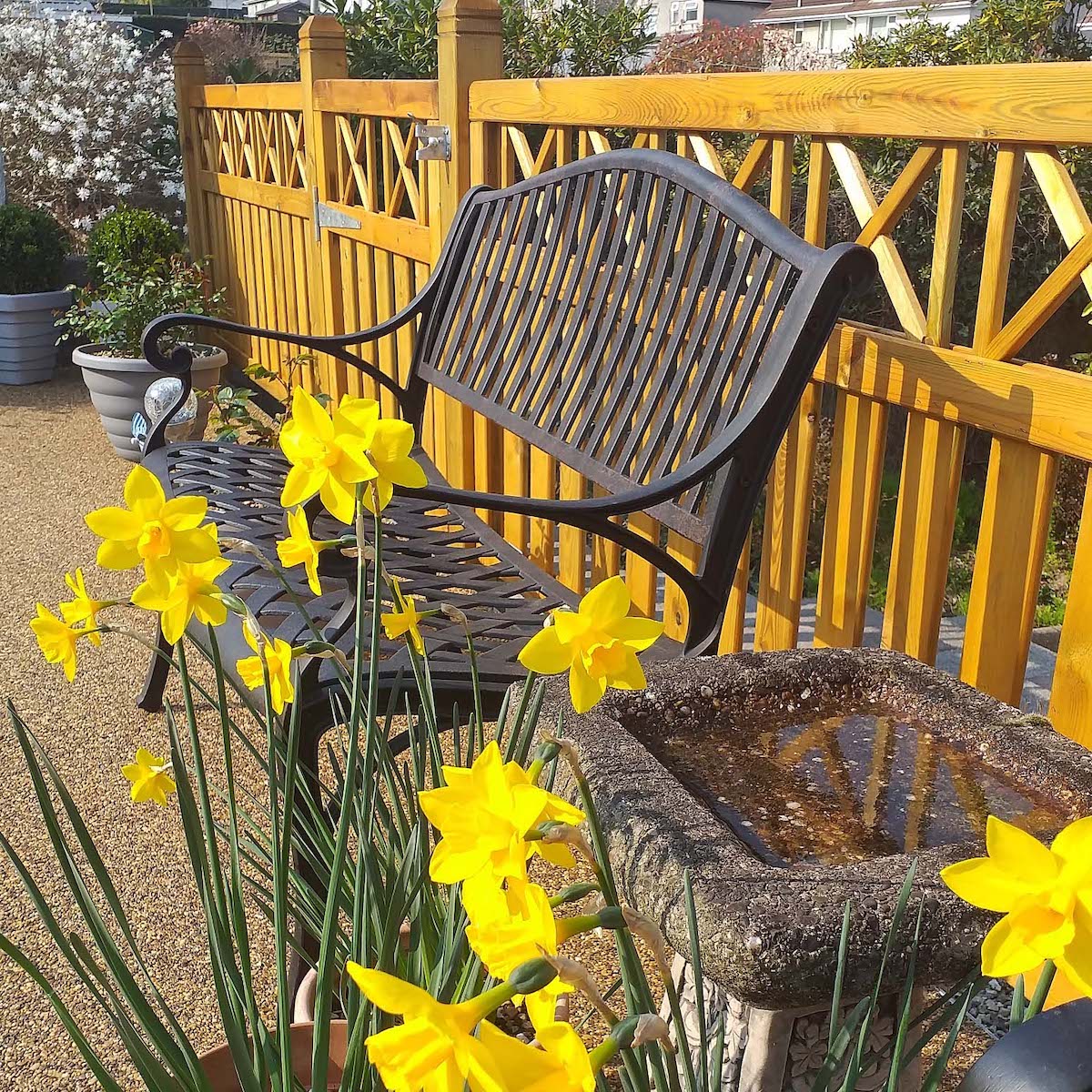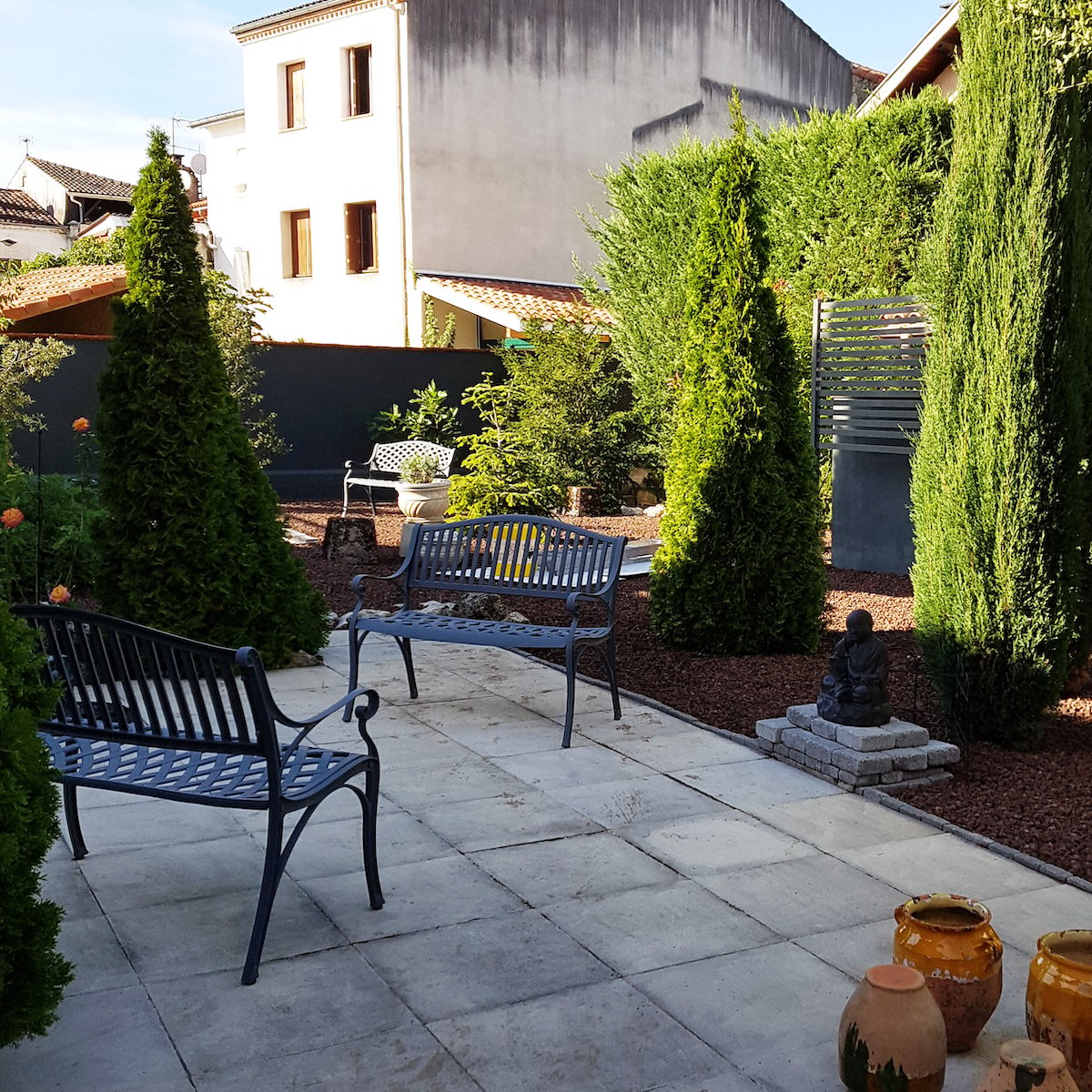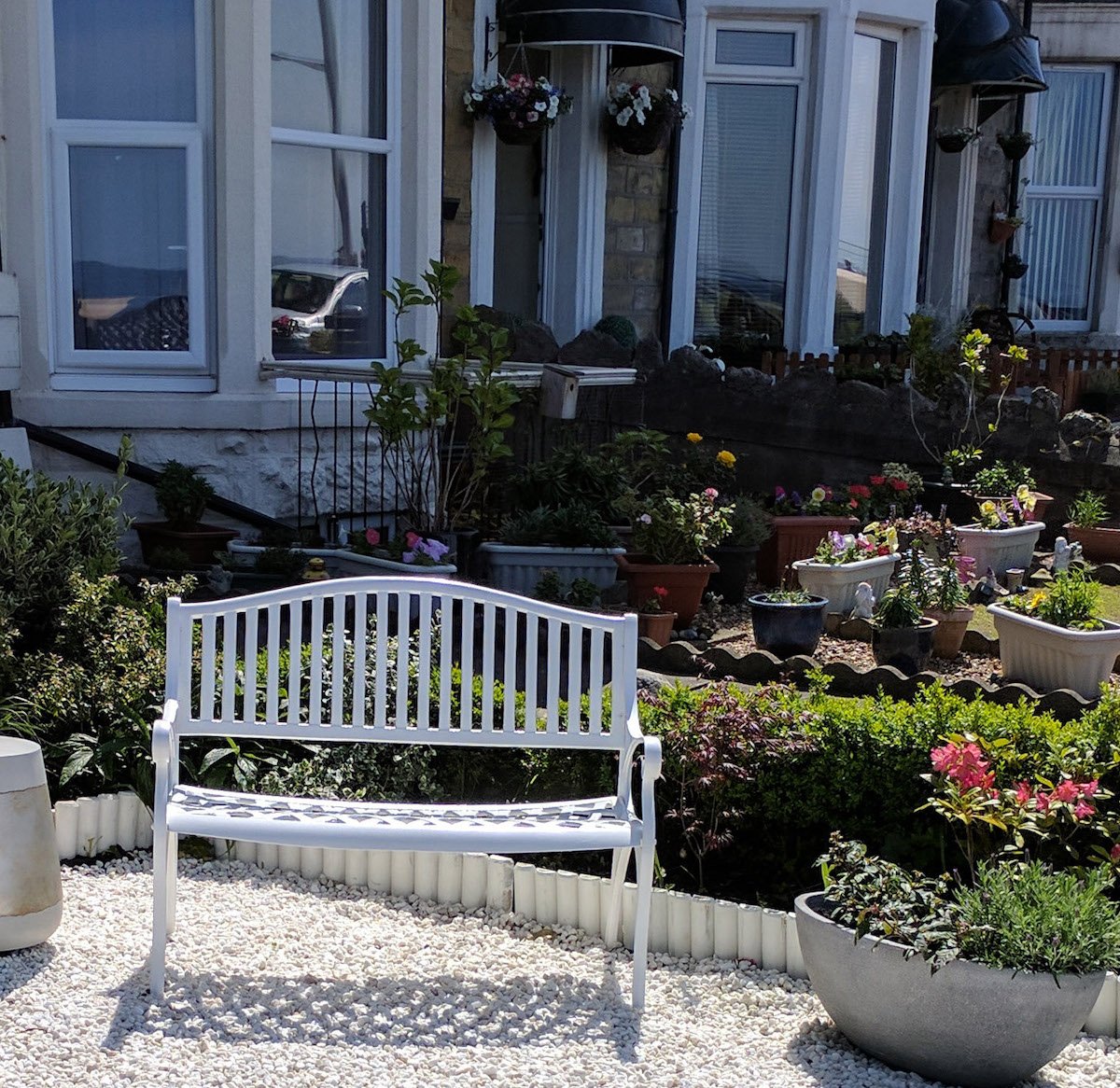As this will be a complete guide to all things garden benches, I suppose we should start with the obvious, and define exactly what they are...
A garden bench is a type of outdoor furniture designed specifically for, well, sitting outside. In the UK they are typically made from weather-resistant materials such as wood, metal, some form of plastic/resin, or a combination of those materials.
They generally feature a long, horizontal seat for two or three people, supported by two or four legs, and are usually placed in gardens, on patios, balconies or other outdoor areas.
The team at Gardeningetc define them as:
“An outdoor bench is a year-round essential that will encourage you to get outside and enjoy the garden. The best outdoor benches are multifunctional, doubling up as useful outside seating while creating a decorative focal point to draw your eye down the garden.”
We agree with them 100%. The garden bench is a versatile piece of furniture that, when combined with other design elements, décor or types of patio furniture, becomes much more than the sum of its parts
They not only add that all-important functionality and style but they will also help create a welcoming and inviting space that draws people outside to enjoy the fresh air and make the most of your outdoor area.
They can be used for a variety of purposes, such as relaxing, dining, or reading, but they can also deliver design impact, create a stunning focal point and help provide us with a spot for a little bit of outdoor zen.
Garden benches are available to buy in a variety of styles, materials, and sizes to suit any garden, and here at Lazy Susan we sell a comprehensive range of cast aluminium benches.
In this article we want to give you all the information you need if you’re looking at buying a new one - either from us or another retailer.
What is the history of outdoor benches?
We think there’s a pretty strong argument for the garden bench being the first piece of garden furniture with a history that dates back to ancient times.
The earliest examples were found in the gardens of ancient Egypt and Rome. In Egypt, they were predominantly made from woven reeds and grasses, while the Romans were known to favour benches made from wood and stone.
These early garden benches were often the preserve of the well-to-do in society, they were a key feature in their outdoor spaces, and they would be ornate and beautifully decorated.
Dating back to 43 AD, the earliest known examples of garden benches were found preserved in the gardens of Pompeii.
In the Middle Ages, garden benches were less common as the garden was used as a functional space for growing food, rather than as a place to relax and enjoy the outdoors. The wealthy would often have recreational benches in their gardens and courtyards, and these were again often made from wood and stone.
That said, more common in Medieval times was the turf bench, which was constructed from stone, wattle and daub or wooden frame, backfilled with earth, and then topped with grass to make it comfortable to sit on.
The Renaissance saw a renewed interest in gardens as recreational spaces and a place of beauty, so the garden bench became a more common feature. Again, they would often be made from wood but they would again be highly decorated with intricate carvings or even hand-painted frescos.
The Industrial Revolution of the 18th century brought new materials and techniques to the fore and the production of garden benches switched to cast iron, which was stronger, durable and better suited to outdoor use.
By the 19th century, popularity had switched to more decorative wrought iron with the birth of the Arts and Crafts movement marking the start of a change in the value we as a society placed on how things were made and for what purpose.
In the 20th century, new materials such as plastic and our friend aluminium were introduced. They were cost-effective, durable, lightweight, and easy to care for, making garden benches more affordable to the average consumer.
Today, garden benches come in a wide range of styles and materials. They can be found in gardens all over the world, and they are one of the best-selling styles here at Lazy Susan.
What are the advantages of putting a bench in your outdoor space?
As simple as the garden bench may be, putting one in your outdoor space - be it at the front of the property to take advantage of the evening sun or at the end of your back garden to create a quiet reading nook - will bring with it the opportunity for a host of different uses or plus points:
Relaxation
Garden benches are the perfect piece of furniture to provide a comfortable place to sit and relax outdoors. They offer an opportunity to create a peaceful corner away from a busy home where you can enjoy the fresh air and all the hard work you’ve put into your garden. You can take 5 to read a book or simply unwind in the fresh air after a hard day at work.
Socialising
A bench will also help to create the ideal spot where you can grab some social time with a family member or friend. It allows you to comfortably accommodate two to three people, and you could pair it with cushions and a side or coffee table to create an inviting space where you can gather and have a chat. We look at what combinations of garden tables and benches work best in our Create the perfect spot for morning coffee or afternoon tea article.
Experience
Placing a garden bench strategically in your outdoor space offers the perfect opportunity to appreciate any surrounding views or the beauty of your own garden. It allows you to enjoy the scenery, observe wildlife, and take in the sights and sounds of nature.
Reflection
Having a garden bench is the perfect opportunity to provide some calm and serenity. Pop it in a quiet corner and it creates a great location for reflection or even meditation. We all need a little quiet time and it is the ideal piece of garden furniture for allowing us to take five, focus, relax, and find some inner peace.
Convenience
As well as bringing some zen, a garden bench is just a great simple solution for creating a space for resting. They work for people of all ages and mobility, however, if that is a concern then they can be strategically placed around your garden to allow you to take a break, which is especially popular with elderly or disabled individuals who may need a temporary respite during garden activities.
Style
A well-placed bench can also serve as a stylish attractive garden feature. Yes, you can sit on it, but it can also just sit there and look pretty. They will bring charm, character, and a sense of completion to your overall garden design. You can choose from a wide range of styles, materials, and finishes to find the perfect one to complement your garden's overall design scheme.
Functionality
We talk a lot about the importance of functionality on our blog but we think it is super important because it allows you to use your outdoor space in the way that you want to. Apart from being a separate seating option, a garden bench can also serve as additional seating at your garden table or even as storage. Some benches come with built-in compartments which is ideal in a small space as it gives you a place to store garden tools, bench cushions, etc.
Creativity
A bench will open up a host of opportunities for you to express your creativity and help pull a garden or patio design scheme together. You can take the bench and further put your personal stamp on it by styling it with cushions, pillows, or outdoor throws. We see many people purposely build a small patio just for their bench and then finish it with planting to further enhance the style and good looks.
What are the most common types of garden benches?
When choosing a new garden bench, it is important that you consider decision-making factors such as the material, style, size, etc.
You want a piece of furniture that is fit for purpose, so durability and weather resistance are essential. However, if you don’t want to spend time painting it, a low-maintenance material might be the best option
The style of the bench should complement the style of your home and garden and it should be of an appropriate size for the free space you have available. Scale and proportion are key, as you don’t want something so big that there’s no room to move around it or too small that it looks lost on a big patio.
When it comes to the material itself, they each have their own pros and cons. Some or more low maintenance than others, some are better suited to small spaces, etc.
The pros and cons of the popular materials on sale in the UK are as follows:
Wood
Let’s be honest, wooden benches are a classic choice. The good ones are made from quality hardwoods such as teak, cedar, redwood, and oak, and whilst they require regular maintenance to keep them weatherproof, that gives you the option to stain or paint them to match the décor of your garden. Wood is a good choice for homeowners who are looking for durable, stylish, and comfortable furniture. However, it is important to be aware of the maintenance requirements and potential for damage before purchasing.
Pros: Natural Beauty, Durability, Versatility, Comfort, Sustainability
Cons: High Maintenance, Heavy, High Cost for Hardwoods, Susceptibility to Weather Damage
Metal
Metal benches are a more durable option than wood, and the common metals on sale in the UK are wrought iron, cast aluminium, and stainless steel. Metal can be powder-coated or painted to further protect it from the elements and rust. It is a good choice for homeowners who are looking for a durable, low-maintenance, and affordable bench. However, on the flip side some metals can be heavy, a little noisy when moved and it has a high heat transfer so is best paired with cushions.
Pros: Durable, Low Maintenance, Lightweight, Affordable, Variety of Styles
Cons: Uncomfortable, Noisy, Susceptible to Rust, High Heat Transfer
Concrete
Concrete benches are a heavy-duty option that can withstand the elements. Most of the ones you can buy are made from cast concrete or precast concrete, and they range from simple modern finishes to more classically decorated designs. A concrete bench is a good choice for homeowners looking for a durable, low-maintenance, but super heavy-duty piece. They’re more of a fixed solution as once in place they’re difficult to move, they’re not known for comfort and concrete can stain.
Pros: Durable, Low Maintenance, Heavy-Duty, Unique
Cons: Heavy, Uncomfortable, Susceptible to Staining, Expensive
Plastic
Plastic or resin benches are a low-maintenance option that is lightweight and affordable. They are often made from recycled materials and are now available in a range of contemporary styles and colours. On the downside there is the potential for them to be a little uncomfortable, they can fade in the sun, feel flimsy, and out of all materials even when made from recycled plastic they’re the (possibly with the exception of concrete) are they least environmentally sound.
Pros: Affordable, Low Maintenance, Lightweight, Variety of Styles
Cons: Uncomfortable, Susceptible to Fading, Flimsy, Not Environmentally Friendly
Wicker
There are two main types of wicker furniture, those made from a natural rattan such as willow, bamboo, grasses, palms, etc. or those made from a synthetic poly-rattan. For this article, we are only concerned with the resin plastic rattans as the natural is generally not suitable for outdoor use in the UK. The synthetic materials are a lightweight and comfortable option that is perfect for patios and decks. They can be difficult to maintain and the plastic is prone to splitting and sun damage.
Pros: Lightweight, Comfortable, Stylish
Cons: Difficult to Maintain, Susceptible to Sun Damage
How do you choose a new garden bench?
When choosing a garden bench, it is important to consider the size of your garden, the style of your décor, material, functionality, comfort, durability and, of course, your budget.
Here are the questions we would ask to help you make a decision:
-
Purpose
How do you plan to use the bench? Will it be primarily for seating or purely just a decorative feature? Are you looking for a place to relax or is it extra seating you can pull up to your garden table when the need arises? -
Functionality
Of course, the main function is to provide a place to sit and relax but there are often other features. Do you want a bench with a backrest (as you’ll find in our range) or not? Do you want a bench with storage? Is the bench for practical use or just aesthetic? -
Style
Style often comes down to a simple case of what you like but you can consider the existing style of your home and garden. Choose a bench that complements the overall theme you have or want. That could be things like modern, rustic, romantic, traditional, or contemporary. -
Material
As discussed in the previous section, garden benches are available in a host of different materials such as wood, metal, and plastic. Each material has its pros and cons in terms of durability, maintenance, and what it looks like. Choose a material that matches your preferences and climate conditions. -
Location
Where you want to put the bench in your garden can have a significant impact on the best type of bench. Think about factors like sunlight, shade, wind, and proximity to other garden features. This will help you to establish if you need a bench that is robust, weather resistant and low maintenance or if something lightweight that can be moved in bad weather is a better fit. -
Size
Measure the available area in your garden to ensure the bench will fit comfortably without obstructing any walkways or other garden/patio design elements. Consider the bench's dimensions, including width, depth, and height. You’ll find the sizes for all of ours on each product page under the “Dimension +” tab. -
Comfort
Comfort can be difficult to gauge if you are shopping online. In-store, of course, you can test. Either way, the thing to look out for if comfort is an important factor is ergonomic curved lines. Many minimal contemporary pieces look great but boxy designs can be uncomfortable. Also pay attention to backrest height, armrests, and seat depth. You can add bench cushions to your order (at a discounted price) in our shop and they’ll significantly increase comfort. -
Durability
It needs to be fit for purpose, so durability and weather resistance are critical. Look for materials that are weather-resistant and require minimal maintenance, especially if you live in an area with harsh weather conditions or where your garden is open and exposed. -
Budget
Set yourself a budget range and stick to it. Prices can vary greatly depending on material, design, and brand, so make sure any sale bargains are a bargain. It is more important to find a good balance between the quality of materials (durability and weather resistance) and affordability. -
Reviews
It always pays to do a little research, and that’s the big advantage of shopping online. You can shop around, compare prices and read customer reviews to assess quality and durability. They will give you a better understanding of the available options and if like us there are customer photos too then you can get a really good handle on what it will look like in your own garden and make an informed purchase. -
Buy
Speaking of purchase, once you have made your choice, you can buy the bench. It is important you check the terms and conditions to make sure the seller has a good warranty like our 3-year guarantee, a returns policy just in case you’re not satisfied, and how the delivery will work.
No matter what type of garden bench you choose, from us or another shop, we’re sure it will bring a touch of style and functionality to your outdoor space.
How do you buy the right style bench?
Answering all of the questions above can help you make a decision on which style or material is right for your outdoor space. However, we can help you dig a little deeper into those factors.
Style is often subjective but we have four things you should keep in mind when looking to buy the right style bench for you and the space where you want it to go:
-
Purpose
Decide how you plan to use the bench. Will it be for indoor or outdoor use? Is it primarily decorative or functional? Understanding the purpose will narrow down your options. -
Space
Measure the area where you plan to pop the bench. This will help you determine the appropriate size and shape. Consider the overall look of the space and ensure the bench complements and fits with the existing design. -
Size
If you have a small garden, look for a smaller more compact bench. Thin curved lines can create the illusion of space. If you have a larger garden, you can get a larger bench or even multiple benches. It is all about getting the right scale and proportions. -
Style
If in doubt, work with the current style of décor you have in your home and garden. If you have a traditional garden, you'll want a traditional-style bench. If you have a modern garden, you'll want something more minimal and contemporary. -
Seating
Buy the right size for the number of people you want to seat. If you have a large family or entertain guests, then you might want a bench that coordinates with your garden table so you can pull it up when the need arises. -
Research
Explore different bench styles to find one that aligns with your taste. Some popular styles include traditional, modern, rustic, industrial, and farmhouse. Consider the materials, finishes, and design elements that appeal to you. -
Budget
How much money are you willing to spend on a garden bench will often dictate the style you can afford or at least help narrow down the style options. Garden benches can range in price from one hundred pounds to a thousand pounds. Set a budget and pick a style that works for that budget.
How do you buy the right-sized garden bench?
When buying a new garden bench, the biggest mistake many make is to buy one too big for the space or too small that it gets a little lost.
The key to getting the right size is to measure carefully and take into account the following:
-
Measure
Carefully measure the free space where you want to put the garden bench. This will give you an idea of the maximum size of bench you can buy. -
Location
Take into account any other items in that location that may have an impact such as steps or planting, etc. Where do you plan to put the bench? For example, if you are putting it on your patio, then you need to make sure that when in situ there’s still safe space to move around, etc. -
People
Think about how many people will be using the bench at any one time. If it is just a quiet reading corner then a small bench will suffice. If you want to entertain a friend for coffee, then you might need a larger bench with a side table, for example.
Height
The height of the bench is also important but one many overlook. You want it to be comfortable to sit down on and get up from, so make sure it is appropriate for the height of those who’ll use it. -
Weight
Check the weight capacity of the bench to ensure that it can support the weight of all users comfortably and the actual weight if you want to be able to pick it up and move it around the garden or store it in the winter.
By considering these factors, you can find the right-sized garden bench that is comfortable and functional for your needs. All of the dimensions and specification details can be found in our shop
If we take our best-selling Jasmine Bench as an example, the dimensions are shown in the illustration above so you can clearly see the floor space required (60 cm x 102 cm) just be sure to factor in space to sit comfortably, move around, etc.
If you are unsure what size bench to get, it is always better to err on the side of caution and get a smaller bench. You can always add more seating later.
If you’re working with a tight space such as on a small balcony, then another great tip is to mark up the dimensions on the patio in chalk or cut up some old cardboard to bench floorspace dimensions to double-check that everything will fit and flow before you buy.
What is the best material for a garden bench?
This is a difficult one to answer, and of course, we are biased towards the cast aluminium we sell. Each material has its own advantages and disadvantages.
What we can say is that we selected cast aluminium for our collection because we felt - after weighing up all those pros and cons - that it was best suited to the UK climate.
For many, those pros and cons are not even something they need to consider. They like what they like. If you love the look of wood, then maybe cast aluminium isn’t going to cut the mustard.
Wood is a natural material that is comfortable to sit on, but you have to accept that it will require significantly more maintenance than other materials.
Metal on the other hand is durable and weather-resistant, but it can be hot to sit on if left in direct sun.
Concrete is heavy and durable, but it can be difficult to move.
Plastic is low-maintenance and affordable, but it may not be as comfortable as other materials and can feel a little cheap.
The best material for a garden bench depends on things like your budget, climate, personal preference, etc.
Think about all these factors we’ve detailed above but most importantly pick a bench you love and one that will fit best with how you like to use it.
Why do we use cast aluminium for our garden benches?
As we stated above, we chose to make cast aluminium the core material for our collection as, for us, it ticked more pros than cons.
Many of the reasons we picked it are the same things consumers are looking for in a piece of garden furniture. It is perfectly suited to the weather we have in the UK and is a great all-rounder.
We felt we could easily mitigate the perceived disadvantages of comfort, noise, rust, and heat transfer with our bench cushions, parasols, screw-in plastic feet and durable painted finish to prevent pitting.
Cast aluminium is a very durable material that can withstand all the myriad weather conditions we can see (often in one day) here in the UK, including rain, snow, sun, and wind.
Also, unlike steel and iron, aluminium is rust-resistant and it will not rot, fade or warp like wood and plastic, making it perfect for outdoor use.
It is a lightweight but robust material, so it feels substantial quality but is not so heavy that two people can’t easily pick the bench up and move it if need be.
One of the biggest selling points for us is that cast aluminium requires very little in the way of maintenance. All you need to do with our benches is give them a wash with a little warm soapy water. Maybe apply a little car wax to give them a nice finish.
Our range is available in a variety of sizes, styles, and painted finishes, all in our trademark classical style, so we know you can find the perfect bench to sit at the heart of your garden.
Our How It’s Made page details the production process for our high-grade sand-cast aluminium furniture.
Why purchase a garden bench from Lazy Susan?
Our garden benches are built to last. They are perfect for gardens, patios and balconies in the UK. We have a comprehensive range to choose from that will deliver:
-
Quality
Lazy Susan garden benches are made from high-quality sand-cast aluminium, which is weatherproof, rust-resistant, and long-lasting. They are hand-crafted and finished to ensure that they are built to stand up to the not-so-great British weather. -
Low-Maintenance
Cast aluminium is a very low-maintenance material. You can simply wipe it down with a damp cloth to keep it clean. There is no need to stain, seal, or paint it, which can save you a lot of time and effort. -
Range
We offer a comprehensive range of garden benches to choose from, so you can find one that perfectly fits your style and space. They come in a variety of finishes, including sandstone, antique bronze, slate grey, and white. -
Ergonomics
Our garden benches, like all our seating, are designed to be comfortable, with an ergonomic supportive backrest and curved seats and armrests. We also sell a range of coordinating bench cushions to make them perfect for relaxing. -
Durability
Cast aluminium is the perfect material to withstand the elements in the UK, so you can leave your bench outside and enjoy it for many years to come. The painted finish is water and UV-resistant, so they will not fade or require repainting. -
Guarantee
We offer a 3-year warranty on all of our garden furniture, so you can be confident that your purchase is protected.
Overall, Lazy Susan is a great choice for anyone looking for a high-quality, low-maintenance, and stylish garden bench.
What is the best position for your bench?
The best position for a garden bench will depend on a number of factors, including the size of your patio, the direction of the sun, and your personal preference.
Here are some things to consider when choosing the perfect location for your new bench:
-
Sun
If you want to enjoy the rising morning sun, then you'll need to choose a spot that faces east. However, if you want to use your patio in the evening, then you want to find a spot that faces west to catch the sunset. -
Shade
You might want to avoid the sun altogether, so pick a cool spot in the shade. -
Wind
If you live in a windy area or your outdoor space is open, then you might be best choosing a spot that is more sheltered. This could be near your house, a fence, or even a large tree. -
Privacy
If you want to sit on your bench without being overlooked by neighbours or passersby, then you need to choose a secluded spot. If need be, add screening or tall planting to create privacy. -
Traffic flow
Make sure to choose a spot for your bench that is not in the way of foot traffic. This will help to prevent accidents and make it more comfortable for you to move around the space. -
View
If you have a beautiful view, then a bench is the perfect solution to take advantage of it.
Once you've considered the above, you can start to narrow down your options. Here are a few specific spots where you might want to put your garden bench:
-
Tree
Under a tree seems to be a big favourite with Lazy Susan customers and it is a great option if you want some shade and privacy. -
Wall/Fence
By placing a bench against a wall or fence it will help to make it feel more secure. -
Corner
A corner is a great option if you want to create a more quiet and intimate space. -
Centre
Nothing wrong with popping it slap bang in the middle of the patio as this can help create an inviting focal point in a large open space. -
Convenience
If you’re looking for convenience then position that bench next to the place you like to take 5. That could be next to a BBQ, fire pit, greenhouse or shed, for example.
Our How to position a 2-seater garden bench in your outdoor space article looks at this subject in more detail but no matter where you choose to put your bench, make sure you leave enough space for people to safely and comfortably walk around it.
How do you create a focal point with a garden bench?
As we mentioned above, a garden bench is a great piece to use as a focal point. This is a great option in large open spaces but it does require a little strategic placement to truly do the job
Successful Garden Design define a focal point as:
“A focal point is an area that is designed to immediately draw attention to a specific space. There are many ways of achieving this in an outside space, for example installing a pond or a statue as the main feature of your garden.”
Here are a few steps to consider to achieve a strong focal point with a garden bench that will draw attention and lead people into your outdoor space:
1. Select an attractive garden bench
You can’t create a focal point with some old faded weather-damaged bench. Pick one that will enhance and encourage people to sit. Work with the style and themes in your home and gardens and surround the bench with elements such as planters to frame it. The customer above has chosen our Rose Bench in Slate to pair with their beautiful rose garden.
2. Find the perfect spot
The perfect spot is the key to a good focal point. Start at the entry point to your outdoor space. Identify a location or use the bench to create a gathering area that pulls you in. This could be near a large tree, a water feature, or at the end of a winding pathway. Spots don't get much more perfect than this and the customer has chosen to also use our Rose Bench but this time in our Antique Bronze finish.
3. Clear the area
If you have the room to play with, try and create some free space around the bench to emphasise its presence. Not too much, just enough to help best frame it. Remove any overgrown plants or clutter that might divert attention away from the bench itself. The customer above has achieved this perfectly with our Jasmine Bench in Antique Bronze framed with the planters and the tiling helping to further emphasise the focal point.
4. Consider the backdrop
Ensure the bench is positioned against an attractive backdrop to enhance its appeal. This could be a brick wall, a hedge, trees, colourful planting, vertical planters or a garden structure such as a trellis or pergola. The customer above has also chosen our Jasmine Bench in Antique Bronze but what more do you need when the stonework looks that good?
5. Add planting
Good planting is the key to a good-looking garden bench. The two go together like a horse and carriage. Think about height and depth, and pick plants that will help to soften the edges or frame it to add visual interest. Introduce some bold colourful flowers, and climbing vines, or arrange potted plants next to the bench to best catch the eye. The customer above got the memo and they've paired our April Bench with a Sandra Side Table, both in our Antique Bronze finish.
6. Define the seating area
Place paving stones, gravel, or a small pathway leading up to the bench to define the seating area and guide the eye towards the focal point. The customer above has created a simple seating area with pebbles and pavers but it is the Rose Bench that will draw people to this spot.
A focal point is just one way a bench can be utilised in your garden or patio design, our How to enhance your patio with our metal garden benches article further explores the principles of good design and looks at how something as simple as our metal benches can enhance your outdoor space.
Can you pair a bench with a garden dining table?
Popular with our customers is to pair our garden benches with one of our dining table sets at checkout.
For example, if you purchase our popular Madison 8-Seater in Antique Bronze (pictured below), you can add a Jasmine coordinating garden bench for only £120. That’s a saving of £109.95 if you purchased the bench separately!
This is a trend we’ve seen grow and grow over the last few years as it is a great way to add extra seating to your garden dining area when the need arises.
The bench will comfortably fit at the end of the table or on one side, and it is a great option if you have a large family or group of friends that you like to entertain.
It can also provide a more casual and comfortable seating option for older guests or you can squeeze a few of the kids/grandkids on there too.
Make sure that the bench is the right size for the table. It needs to be long enough to seat the desired number of people, but it should also not be so long that it takes up too much space or makes it difficult to get in and out for other guests.
The good thing about buying from us in a bundle deal - apart from the big savings - is that our collection is designed to complement the style, size and shape of our dining tables.
Can you pair a bench with a side table?
Another popular bundle deal is to pair a bench with a side or coffee table. This is a great way to create a cosy and inviting space in your home.
There are a few things to keep in mind when pairing a bench with a side table though:
Make sure that the bench and side table are the right size for each other. You don’t want it too tall or too low so that it’s difficult to reach any food or drinks
Choose a bench and side table that complement each other both stylistically and in a material that works together. You can create a nice contrast by pairing different materials but if you are unsure what works then our advice is to keep it coordinated.
Place the bench and side table in a way that is both functional and stylish. For example, you could place the bench against a wall and place the side table next to it to create a cosy coffee spot.
In our collection, we offer a range of side and coffee tables. The smaller tables such as our Willow (pictured above) are perfect for providing a place to put drinks and snacks.
Pair our benches with a larger coffee-style table such as our Claire (above) is fab for creating a more relaxed and informal atmosphere.
Pair a bench with a side table with a round top such as our Ava (above) and it's a great way to create a more cohesive look when space is limited.
No matter what type of bench and side table you choose, make sure that they are comfortable and stylish.
With a little planning, you can easily pair a bench with a side table to create a beautiful and inviting place for taking 5 with your latest book, grabbing a coffee in the morning or sharing a glass of wine or two in the evening.
How do you assemble our garden benches?
All our benches are sent to you as Ready-To-Assemble. This makes them easy and safe to pack, store, and ship, and therefore it keeps the cost of shipping down.
Assembly is simple and generally only takes around 15 minutes or so to complete.
The assembly instructions for our Jasmine Bench are shown in the illustration above and in the videos below:
The basic steps to assembling our benches are as follows:
-
Start by unpacking and laying out all the parts on a soft surface such as a blanket or the large boxes we ship our benches in to prevent damage, especially if building outside.
-
Gather all the necessary fixings, tools, and parts and start by assembling as per the instructions provided.
-
Attach the legs to the seat and back using the bolts provided but only finger tighten until all are in place, level and flush.
-
Check the bench is level and all parts are lining up correctly.
-
Screw in the plastic feet to protect the metal from rough surfaces and also provide a little adjustment on an uneven patio surface.
-
Make sure that all of the screws and bolts are securely tightened with the tools provided once you’re happy everything is lining up correctly.
How to assemble Jasmine
How to assemble April
How to assemble Rose
How to assemble Grace
How to assemble July
How do you clean and maintain our garden benches?
Whilst our range of benches is super low maintenance, leave them outside and they will get dirty. Cleaning is inevitable. That’s said you don’t need any specialist solutions and a bench can be wiped down in 5 minutes.
To clean a cast aluminium garden bench, follow these simple steps:
-
Remove any loose debris from the surface with a soft brush.
-
Mix a solution of car shampoo and warm water in a bucket.
-
Dip a sponge or soft microfibre cloth into the solution and wring it out so that it is damp.
-
Wipe down the bench with the sponge or cloth.
-
Pay special attention to any areas that are particularly dirty.
-
Rinse the bench with a garden hose on a spray setting.
-
Dry the bench thoroughly with a clean towel.
-
Apply a light coat of carnauba-style car wax and a soft microfibre cloth to give it a nice sheen and keep it cleaner for longer.
If your bench has any stubborn stains, such as bird poo or tree sap, then you can often use a mixture of white vinegar and water to remove them.
Simply mix equal parts vinegar and water in a spray bottle. Spray the vinegar solution onto the stain and let it sit for a few minutes. Then, wipe the stain with a soft microfibre cloth, rinse and dry.
Avoid using harsh chemicals or abrasive cleaners, as these can damage the painted finish on our furniture.
If you live in a coastal area, you may need to clean your bench more often to remove salt deposits.
If you notice any chips or scratches in the paint, then you should touch them up immediately to prevent moisture from getting and compromising the paintwork. The video below shows you how to apply our Touch Up Paint:
If you don’t have a place to store it in the winter, then our advice when not in use is to cover your bench with a fitted waterproof cover as this will help to keep it clean and ready to use.
By following these simple tips, you can keep your cast aluminium garden bench looking its best for many years to come
The Lazy Susan garden bench collection
Jasmine Bench
Our Jasmine Bench has been our bestselling bench for many years thanks to its combination of style, comfort and durability. It is the perfect choice for those looking to give their outdoor space a more modern classically look and is perfect for relaxing, reading, catching up with friends, enjoying a spot of afternoon tea or that first cup of coffee in the morning.
Jasmine Bench - Antique Bronze
Shop Jasmine Bench in Antique Bronze
Jasmine Bench - Slate Grey
Jasmine Bench - White
Jasmine Bench - Sandstone
Shop Jasmine Bench in Sandstone
Rose Bench
The Rose bench features a beautiful central rose motif on the backrest of the bench, and our trademark latticework. Another popular seller, it weighs in at 14kg, which is a lovely balance between a quality feel that is still light enough to move it around your garden. Weatherproof, and easy to assemble, Rose looks great in all four available painted finishes.
Rose Bench - Antique Bronze
Shop Rose Bench in Antique Bronze
Rose Bench - Slate Grey
Rose Bench - White
Rose Bench - Sandstone
July Bench
Our July bench features a more minimal design with some stylish criss-cross metalwork. It has a great look that will work on its own in a sunny part of the garden, or it pairs perfectly with many of our dining sets so you can mix it up and use it as additional seating. Again, it weighs in at 14kg so is easy to move around until you find the best spot for this versatile, stylish, and comfortable garden bench.
July Bench - Antique Bronze
Shop July Bench in Antique Bronze
July Bench - Slate Grey
July Bench - White
April Bench
The April bench features an exquisite, intricate metalwork design in our 4 eye-catching finishes that are sure to enhance any outdoor space. Enjoy the April bench as you relax, read, catch up with friends, enjoy afternoon tea or that first cup of coffee in the morning.
April Bench - Antique Bronze
Shop April Bench in Antique Bronze
April Bench - Slate Grey
April Bench - White
April Bench - Sandstone
Grace Bench
The Grace bench features a modern vertical striped metalwork design which gives the table a chic, and contemporary feel. Another style that has proven to be very popular with our customers, it looks great when finished with one of our bold-coloured bench cushions, and it works well as a stand-alone piece but also paired with a side or coffee table.
Grace Bench - Antique Bronze
Shop Grace Bench in Antique Bronze
Grace Bench - Slate Grey
Grace Bench - White
If you have any photos of our Garden Benches, then we’d love to see a few for our Do Some Good charity campaign. You can tag us @LazySusanFurniture on Instagram or Facebook or Upload Here.
Related Articles
- Enhance your patio with our metal garden benches
Our design team are exploring the principles of good garden design and looking at how something as simple as our metal garden benches can enhance your patio…
Read More - Create the perfect spot for morning coffee or afternoon tea with our garden tables and benches
We think that a spot of morning coffee or afternoon tea on our side and coffee-style garden tables and benches is probably the best way to use them…
Read More - How to create a quiet corner in your garden with a small garden bench
If you're looking to create a quiet corner in your garden away from the main patio, then a small garden bench is the perfect piece of outdoor furniture due to its informality, versatility, intimacy, relaxing form and all-around good looks…
Read More - How to choose the best position for your garden bench?
If you know you want a 2-seater garden bench in your garden but you’re not sure where best to put it, then in this article, the Lazy Susan team are sharing their insight on some of the best places…
Read More - The history of the cast iron garden bench
We’re discussing the history of the cast iron garden bench, and exploring how this material became popular in the UK in both our public and private outdoor spaces…
Read More




